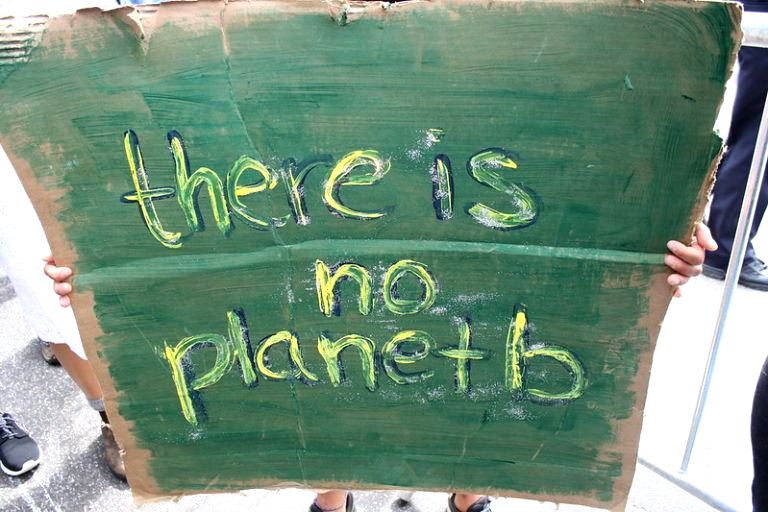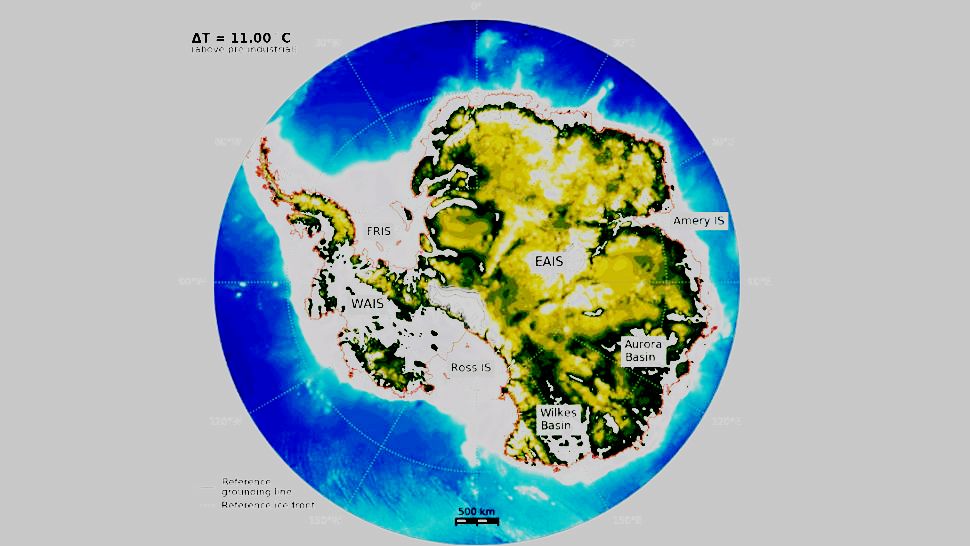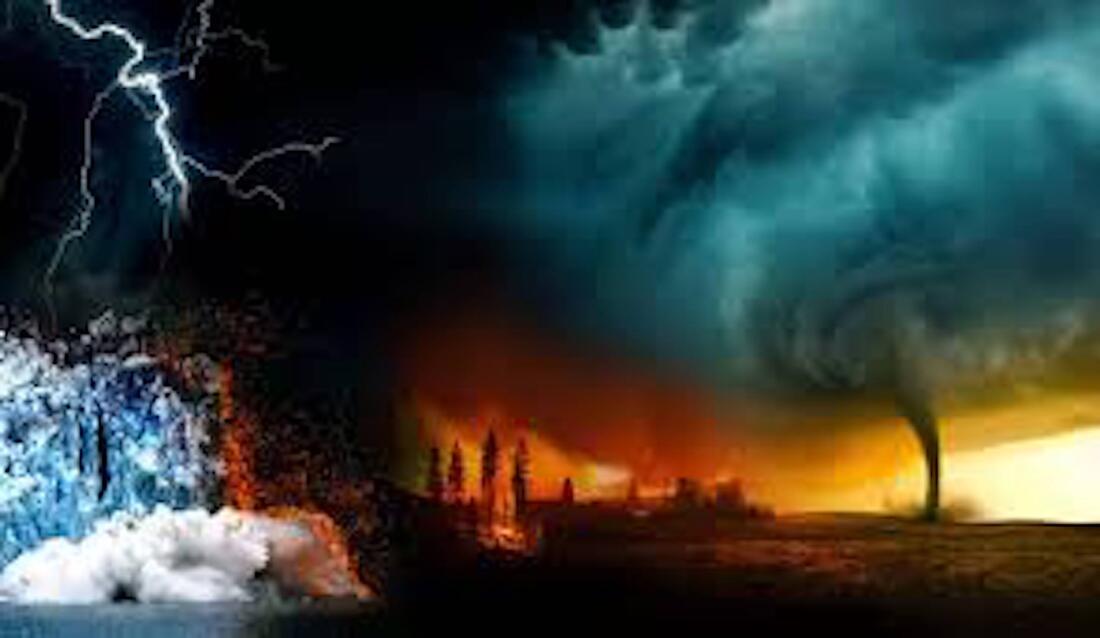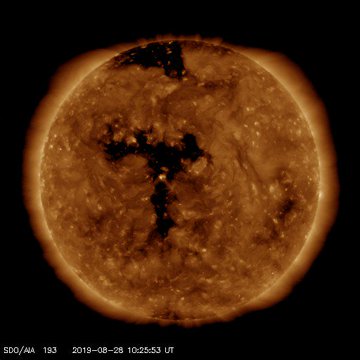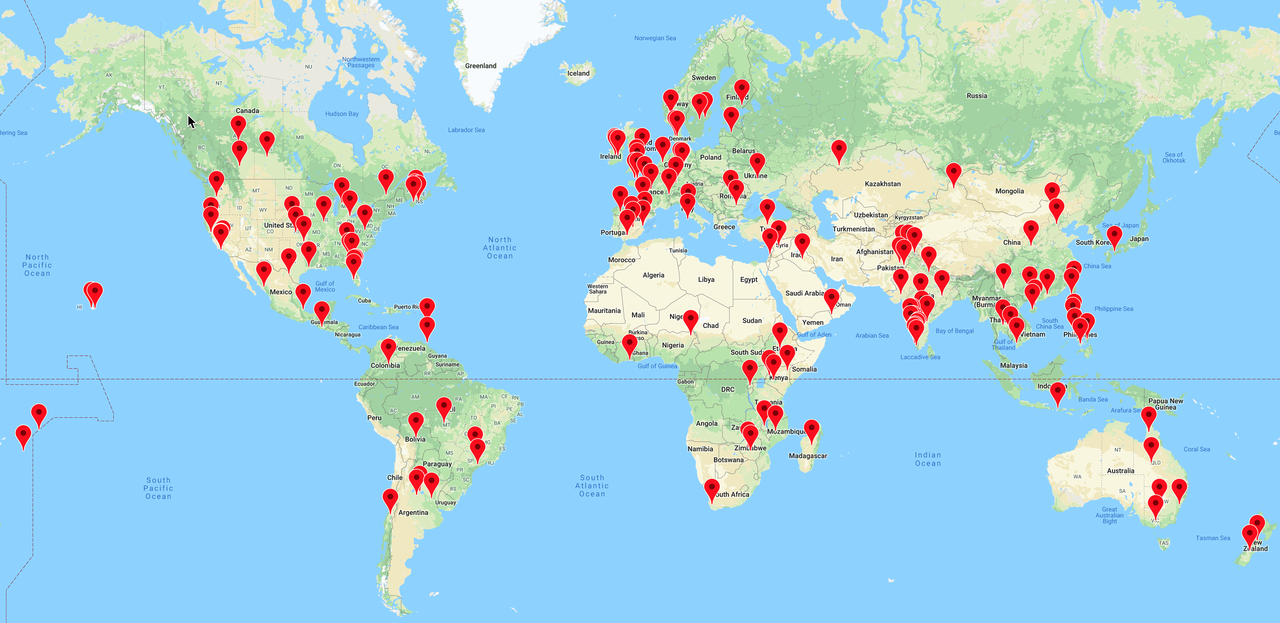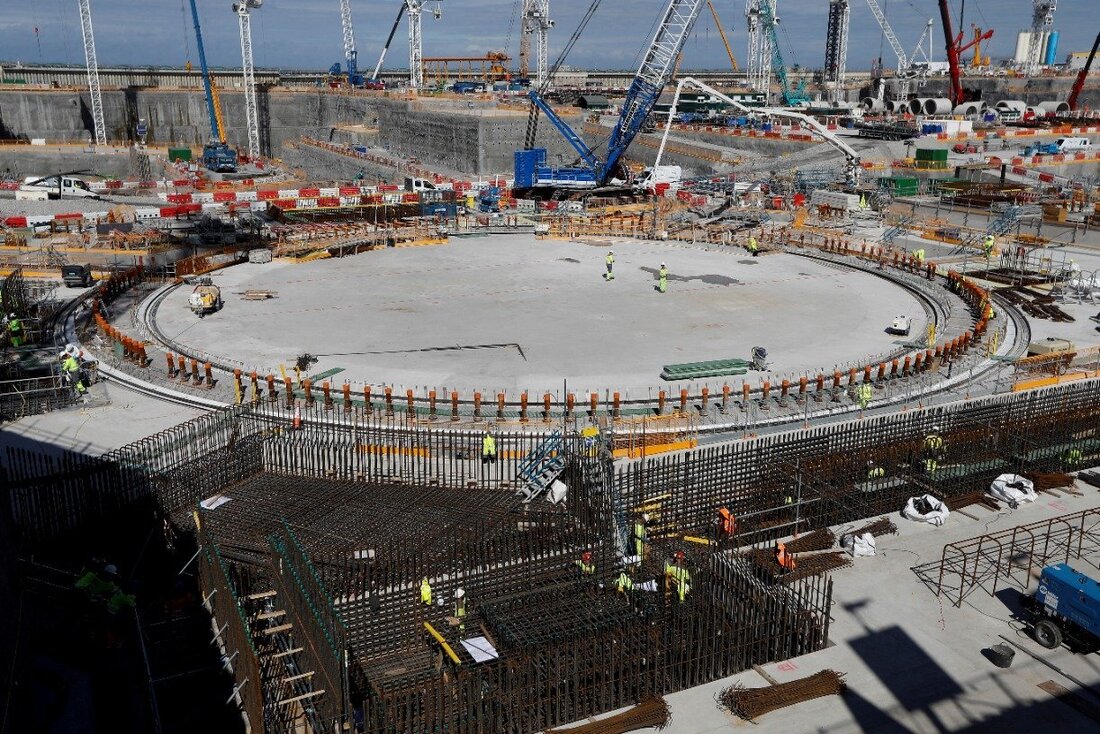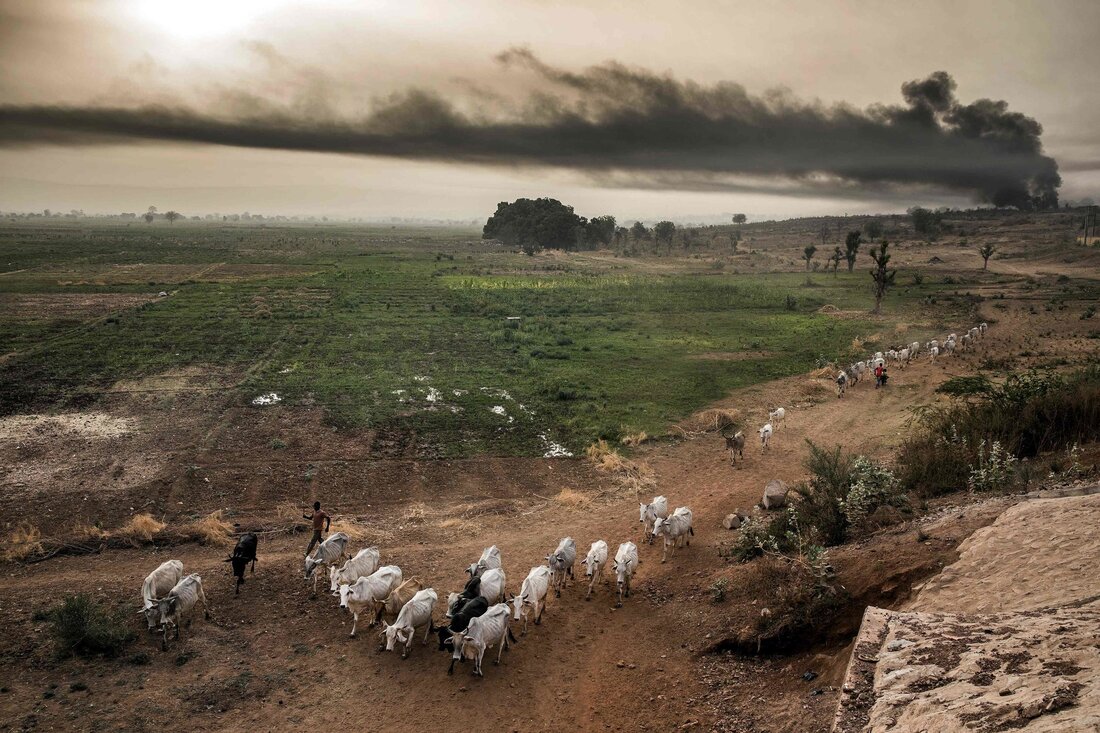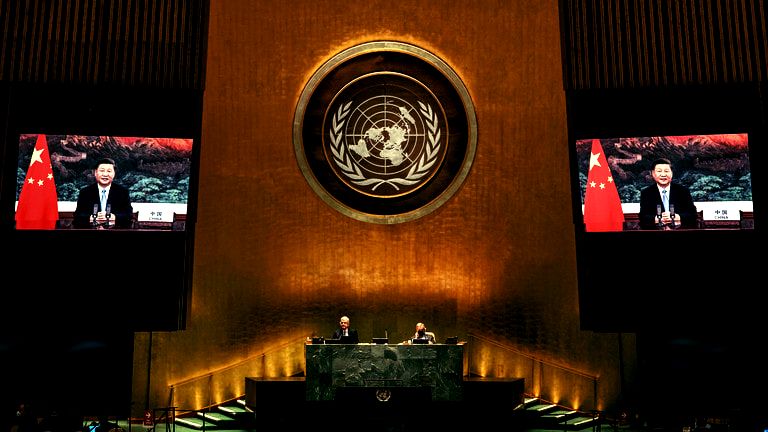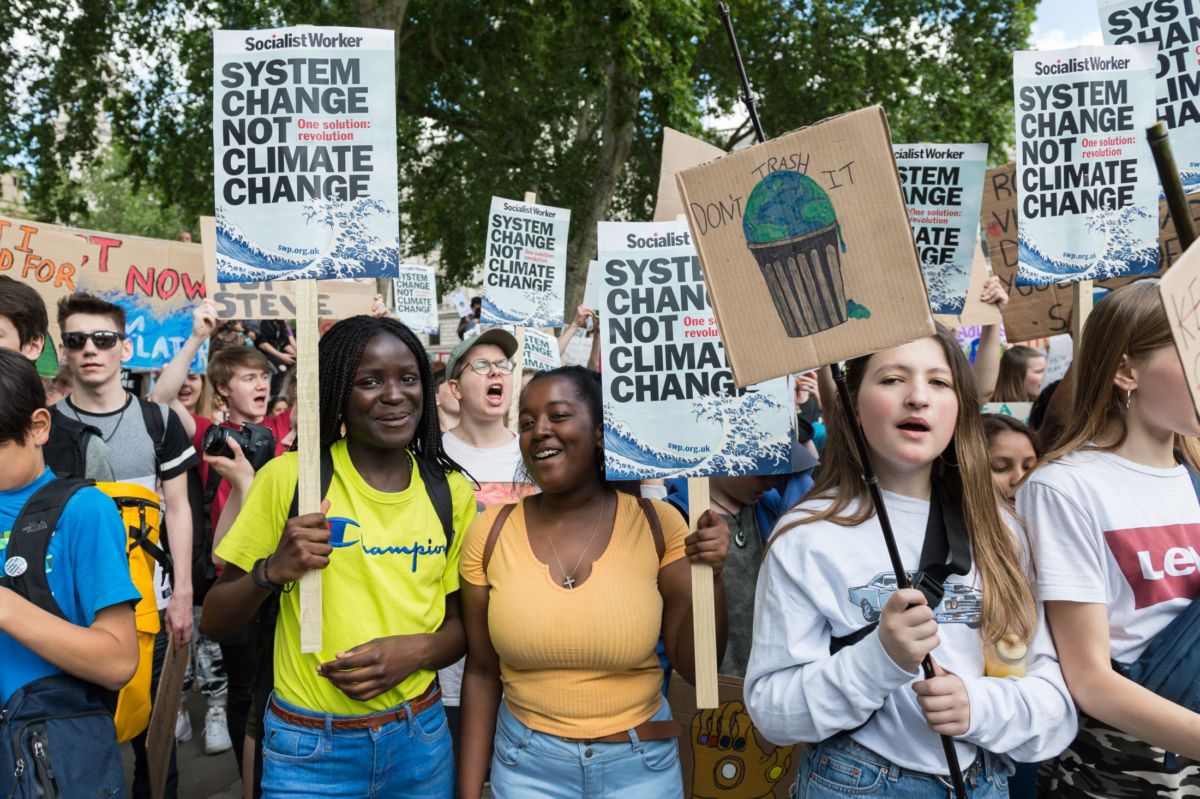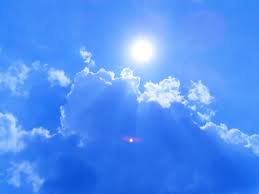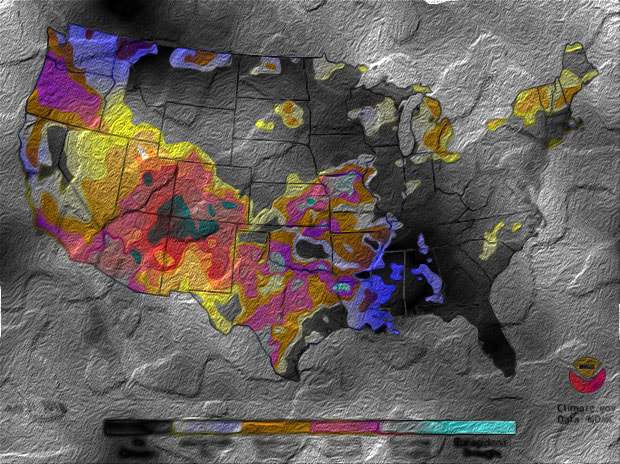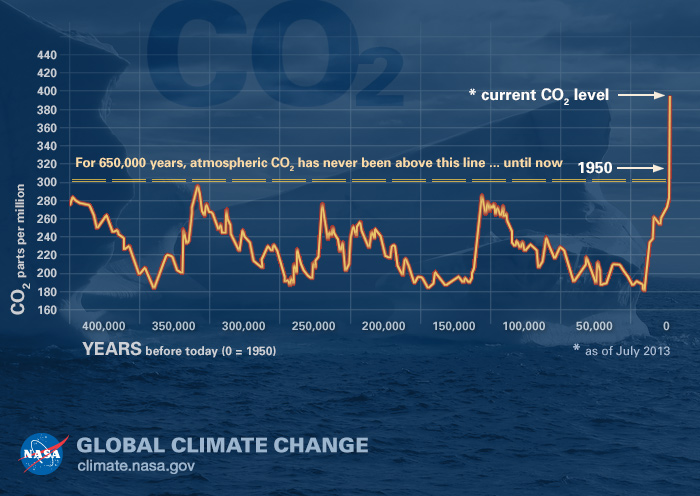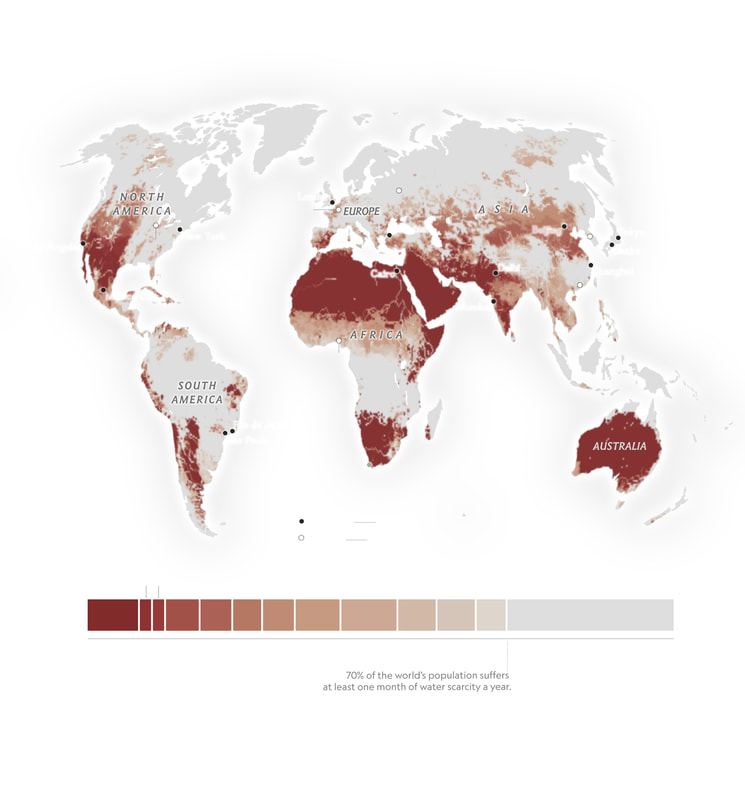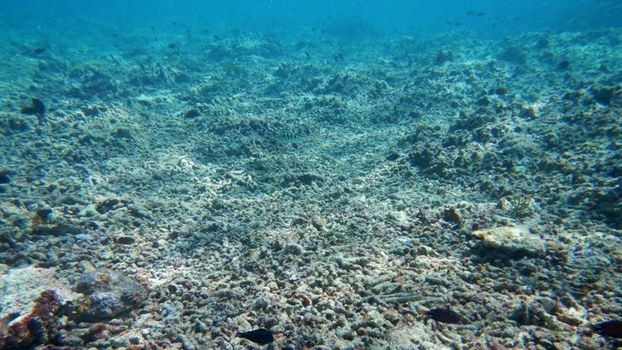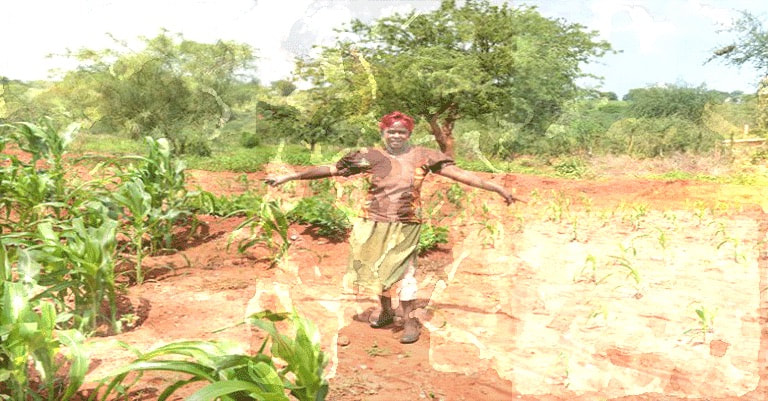YOU CAN'T RE UP ON THE AFTER LIFE
Good news from #AMS2023: The ozone layer is on track to recover within four decades.
— World Meteorological Organization (@WMO) January 9, 2023
Press release ➡️ https://t.co/htPbNDJ9VU
Executive summary ➡️ https://t.co/yO6o2dVOd3
Partners □□ @UNEP, @NOAA, @NASA, @EU_Commission pic.twitter.com/03FY2TQHPo
WOW our HANDZ!!!!!!!!!!!!
planet c DROUGHT jObS
atlantis @ last
Climate changeFrom Wikipedia, the free encyclopedia
For current and future climatological effects of human influences, see global warming. For the study of past climate change, see paleoclimatology. For temperatures on the longest time scales, see geologic temperature record.
Atmospheric sciencesAtmospheric physics
Atmospheric dynamics (category)
Atmospheric chemistry (category)MeteorologyWeather (category) · (portal)
Tropical cyclone (category)ClimatologyClimate (category)
Climate change (category)
Global warming (category) · (portal)
Climate change is a change in the statistical distribution of weather patterns when that change lasts for an extended period of time (i.e., decades to millions of years). Climate change may refer to a change in average weather conditions, or in the time variation of weather around longer-term average conditions (i.e., more or fewer extreme weather events). Climate change is caused by factors such as biotic processes, variations in solar radiation received by Earth, plate tectonics, and volcanic eruptions. Certain human activities have also been identified as significant causes of recent climate change, often referred to as "global warming".[1]
Scientists actively work to understand past and future climate by using observations and theoretical models. A climate record — extending deep into the Earth's past — has been assembled, and continues to be built up, based on geological evidence from borehole temperature profiles, cores removed from deep accumulations of ice, floral andfaunal records, glacial and periglacial processes, stable-isotope and other analyses of sediment layers, and records of past sea levels. More recent data are provided by the instrumental record. General circulation models, based on thephysical sciences, are often used in theoretical approaches to match past climate data, make future projections, and link causes and effects in climate change.
Contents [hide]
§TerminologyThe most general definition of climate change is a change in the statistical properties of the climate system when considered over long periods of time, regardless of cause.[2] Accordingly, fluctuations over periods shorter than a few decades, such as El Niño, do not represent climate change.
The term sometimes is used to refer specifically to climate change caused by human activity, as opposed to changes in climate that may have resulted as part of Earth's natural processes.[3] In this sense, especially in the context of environmental policy, the term climate change has become synonymous with anthropogenicglobal warming. Within scientific journals, global warming refers to surface temperature increases while climate change includes global warming and everything else that increasing greenhouse gas levels will affect.[4]
§CausesOn the broadest scale, the rate at which energy is received from the sun and the rate at which it is lost to space determine the equilibrium temperature and climate of Earth. This energy is distributed around the globe by winds, ocean currents, and other mechanisms to affect the climates of different regions.
Factors that can shape climate are called climate forcings or "forcing mechanisms".[5] These include processes such as variations in solar radiation, variations in the Earth's orbit, variations in the albedo or reflectivity of the continents and oceans, mountain-building and continental drift and changes in greenhouse gasconcentrations. There are a variety of climate change feedbacks that can either amplify or diminish the initial forcing. Some parts of the climate system, such as the oceans and ice caps, respond more slowly in reaction to climate forcings, while others respond more quickly. There are also key threshold factors which when exceeded can produce rapid change.
Forcing mechanisms can be either "internal" or "external". Internal forcing mechanisms are natural processes within the climate system itself (e.g., the thermohaline circulation). External forcing mechanisms can be either natural (e.g., changes in solar output) or anthropogenic (e.g., increased emissions of greenhouse gases).
Whether the initial forcing mechanism is internal or external, the response of the climate system might be fast (e.g., a sudden cooling due to airborne volcanic ashreflecting sunlight), slow (e.g. thermal expansion of warming ocean water), or a combination (e.g., sudden loss of albedo in the arctic ocean as sea ice melts, followed by more gradual thermal expansion of the water). Therefore, the climate system can respond abruptly, but the full response to forcing mechanisms might not be fully developed for centuries or even longer.
§Internal forcing mechanismsScientists generally define the five components of earth's climate system to include atmosphere, hydrosphere, cryosphere, lithosphere (restricted to the surface soils, rocks, and sediments), and biosphere.[6] Natural changes in the climate system ("internal forcings") result in internal "climate variability".[7] Examples include the type and distribution of species, and changes in ocean currents.
§Ocean variabilityMain article: Thermohaline circulation
Pacific Decadal Oscillation 1925 to 2010
The ocean is a fundamental part of the climate system, some changes in it occurring at longer timescales than in theatmosphere, massing hundreds of times more and having very high thermal inertia (such as the ocean depths still lagging today in temperature adjustment from the Little Ice Age).[clarification needed][8]
Short-term fluctuations (years to a few decades) such as the El Niño-Southern Oscillation, the Pacific decadal oscillation, theNorth Atlantic oscillation, and the Arctic oscillation, represent climate variability rather than climate change. On longer time scales, alterations to ocean processes such as thermohaline circulation play a key role in redistributing heat by carrying out a very slow and extremely deep movement of water and the long-term redistribution of heat in the world's oceans.
A schematic of modernthermohaline circulation. Tens of millions of years ago, continental plate movement formed a land-free gap around Antarctica, allowing formation of the ACC which keeps warm waters away from Antarctica.
§LifeLife affects climate through its role in the carbon and water cycles and such mechanisms as albedo, evapotranspiration, cloud formation, and weathering.[9][10][11] Examples of how life may have affected past climate include: glaciation 2.3 billion years ago triggered by the evolution of oxygenic photosynthesis,[12][13] glaciation 300 million years ago ushered in by long-term burial of decomposition-resistant detritus of vascular land plants (forming coal),[14][15] termination of the Paleocene-Eocene Thermal Maximum 55 million years ago by flourishing marine phytoplankton,[16][17] reversal of global warming 49 million years ago by 800,000 years of arctic azolla blooms,[18][19] and global cooling over the past 40 million years driven by the expansion of grass-grazer ecosystems.[20][21]
§External forcing mechanisms
Increase in atmospheric CO2 levels
Milankovitch cycles from 800,000 years ago in the past to 800,000 years in the future.
Variations in CO2, temperature and dust from the Vostok ice core over the last 450,000 years
§Orbital variationsMain article: Milankovitch cycles
Slight variations in Earth's orbit lead to changes in the seasonal distribution of sunlight reaching the Earth's surface and how it is distributed across the globe. There is very little change to the area-averaged annually averaged sunshine; but there can be strong changes in the geographical and seasonal distribution. The three types of orbital variations are variations in Earth'seccentricity, changes in the tilt angle of Earth's axis of rotation, and precession of Earth's axis. Combined together, these produce Milankovitch cycles which have a large impact on climate and are notable for their correlation to glacial andinterglacial periods,[22] their correlation with the advance and retreat of the Sahara,[22] and for their appearance in thestratigraphic record.[23][24]
The IPCC notes that Milankovitch cycles drove the ice age cycles, CO2 followed temperature change "with a lag of some hundreds of years," and that as a feedback amplified temperature change.[25] The depths of the ocean have a lag time in changing temperature (thermal inertia on such scale). Upon seawater temperature change, the solubility of CO2 in the oceans changed, as well as other factors impacting air-sea CO2 exchange.[26]
§Solar outputMain article: Solar variation
Variations in solar activity during the last several centuries based on observations of sunspots and berylliumisotopes. The period of extraordinarily few sunspots in the late 17th century was the Maunder minimum.
The Sun is the predominant source of energy input to the Earth. Both long- and short-term variations in solar intensity are known to affect global climate.
Three to four billion years ago the sun emitted only 70% as much power as it does today. If the atmospheric composition had been the same as today, liquid water should not have existed on Earth. However, there is evidence for the presence of water on the early Earth, in the Hadean[27][28] and Archean[29][27] eons, leading to what is known as the faint young Sun paradox.[30]Hypothesized solutions to this paradox include a vastly different atmosphere, with much higher concentrations of greenhouse gases than currently exist.[31] Over the following approximately 4 billion years, the energy output of the sun increased and atmospheric composition changed. The Great Oxygenation Event – oxygenation of the atmosphere around 2.4 billion years ago – was the most notable alteration. Over the next five billion years the sun's ultimate death as it becomes a red giant and then a white dwarf will have large effects on climate, with the red giant phase possibly ending any life on Earth that survives until that time.
Solar output also varies on shorter time scales, including the 11-year solar cycle[32] and longer-term modulations.[33] Solar intensity variations possibly as a result of the Wolf, Spörer and Maunder Minimum are considered to have been influential in triggering the Little Ice Age,[34] and some of the warming observed from 1900 to 1950. The cyclical nature of the sun's energy output is not yet fully understood; it differs from the very slow change that is happening within the sun as it ages and evolves. Research indicates that solar variability has had effects including the Maunder minimum from 1645 to 1715 A.D., part of the Little Ice Age from 1550 to 1850 A.D. that was marked by relative cooling and greater glacier extent than the centuries before and afterward.[35][36] Some studies point toward solar radiation increases from cyclical sunspot activity affecting global warming, and climate may be influenced by the sum of all effects (solar variation, anthropogenic radiative forcings, etc.).[37][38]
Interestingly, a 2010 study[39] suggests, “that the effects of solar variability on temperature throughout the atmosphere may be contrary to current expectations.”
In an Aug 2011 Press Release,[40] CERN announced the publication in the Nature journal the initial results from its CLOUDexperiment. The results indicate that ionisation from cosmic rays significantly enhances aerosol formation in the presence of sulfuric acid and water, but in the lower atmosphere where ammonia is also required, this is insufficient to account for aerosol formation and additional trace vapours must be involved. The next step is to find more about these trace vapours, including whether they are of natural or human origin.
Further information: Cosmic ray#Postulated role in climate change
§Volcanism
In atmospheric temperature from 1979 to 2010, determined by MSUNASA satellites, effects appear fromaerosols released by major volcanic eruptions (El Chichón and Pinatubo).El Niño is a separate event, from ocean variability.
The eruptions considered to be large enough to affect the Earth's climate on a scale of more than 1 year are the ones that inject over 0.1 Mt of SO2 into the stratosphere.[41] This is due to the optical properties of SO2 and sulfate aerosols, which strongly absorb or scatter solar radiation, creating a global layer of sulfuric acid haze.[42] On average, such eruptions occur several times per century, and cause cooling (by partially blocking the transmission of solar radiation to the Earth's surface) for a period of a few years.
The eruption of Mount Pinatubo in 1991, the second largest terrestrial eruption of the 20th century, affected the climate substantially, subsequently global temperatures decreased by about 0.5 °C (0.9 °F) for up to three years.[43][44] Thus, the cooling over large parts of the Earth reduced surface temperatures in 1991-93, the equivalent to a reduction in net radiation of 4 watts per square meter.[45] The Mount Tambora eruption in 1815 caused the Year Without a Summer.[46] Much larger eruptions, known as large igneous provinces, occur only a few times every fifty - hundred million years - through flood basalt, and caused in Earth past global warming and mass extinctions.[47]
Small eruptions, with injections of less than 0.1 Mt of sulfur dioxide into the stratosphere, impact the atmosphere only subtly, as temperature changes are comparable with natural variability. However, because smaller eruptions occur at a much higher frequency, they too have a significant impact on Earth's atmosphere.[41][48]
Seismic monitoring maps current and future trends in volcanic activities, and tries to develop early warning systems. In climate modelling the aim is to study the physical mechanisms and feedbacks of volcanic forcing.[49]
Volcanoes are also part of the extended carbon cycle. Over very long (geological) time periods, they release carbon dioxide from the Earth's crust and mantle, counteracting the uptake by sedimentary rocks and other geological carbon dioxide sinks. The US Geological Survey estimates are that volcanic emissions are at a much lower level than the effects of current human activities, which generate 100–300 times the amount of carbon dioxide emitted by volcanoes.[50] A review of published studies indicates that annual volcanic emissions of carbon dioxide, including amounts released from mid-ocean ridges, volcanic arcs, and hot spot volcanoes, are only the equivalent of 3 to 5 days of human caused output. The annual amount put out by human activities may be greater than the amount released by supererruptions, the most recent of which was the Toba eruption in Indonesia 74,000 years ago.[51]
Although volcanoes are technically part of the lithosphere, which itself is part of the climate system, the IPCC explicitly defines volcanism as an external forcing agent.[52]
§Plate tectonicsMain article: Plate tectonics
Over the course of millions of years, the motion of tectonic plates reconfigures global land and ocean areas and generates topography. This can affect both global and local patterns of climate and atmosphere-ocean circulation.[53]
The position of the continents determines the geometry of the oceans and therefore influences patterns of ocean circulation. The locations of the seas are important in controlling the transfer of heat and moisture across the globe, and therefore, in determining global climate. A recent example of tectonic control on ocean circulation is the formation of the Isthmus of Panama about 5 million years ago, which shut off direct mixing between the Atlantic and Pacific Oceans. This strongly affected the ocean dynamics of what is now the Gulf Stream and may have led to Northern Hemisphere ice cover.[54][55] During the Carboniferous period, about 300 to 360 million years ago, plate tectonics may have triggered large-scale storage of carbon and increased glaciation.[56] Geologic evidence points to a "megamonsoonal" circulation pattern during the time of the supercontinent Pangaea, and climate modeling suggests that the existence of the supercontinent was conducive to the establishment of monsoons.[57]
The size of continents is also important. Because of the stabilizing effect of the oceans on temperature, yearly temperature variations are generally lower in coastal areas than they are inland. A larger supercontinent will therefore have more area in which climate is strongly seasonal than will several smaller continents or islands.
§Human influencesMain article: Global warming
In the context of climate variation, anthropogenic factors are human activities which affect the climate. The scientific consensus on climate change is "that climate is changing and that these changes are in large part caused by human activities,"[58] and it "is largely irreversible."[59]
“Science has made enormous inroads in understanding climate change and its causes, and is beginning to help develop a strong understanding of current and potential impacts that will affect people today and in coming decades. This understanding is crucial because it allows decision makers to place climate change in the context of other large challenges facing the nation and the world. There are still some uncertainties, and there always will be in understanding a complex system like Earth’s climate. Nevertheless, there is a strong, credible body of evidence, based on multiple lines of research, documenting that climate is changing and that these changes are in large part caused by human activities. While much remains to be learned, the core phenomenon, scientific questions, and hypotheses have been examined thoroughly and have stood firm in the face of serious scientific debate and careful evaluation of alternative explanations.”
— United States National Research Council, Advancing the Science of Climate Change
Of most concern in these anthropogenic factors is the increase in CO2 levels due to emissions from fossil fuel combustion, followed by aerosols (particulate matter in the atmosphere) and the CO2 released by cement manufacture. Other factors, including land use, ozone depletion, animal agriculture[60] and deforestation, are also of concern in the roles they play – both separately and in conjunction with other factors – in affecting climate, microclimate, and measures of climate variables.
§Physical evidence
Comparisons between Asian Monsoons from 200 A.D.to 2000 A.D. (staying in the background on other plots), Northern Hemisphere temperature, Alpine glacier extent (vertically inverted as marked), and human history as noted by the U.S. NSF.
Arctic temperature anomalies over a 100 year period as estimated by NASA. Typical high monthly variance can be seen, while longer-term averages highlight trends.
Evidence for climatic change is taken from a variety of sources that can be used to reconstruct past climates. Reasonably complete global records of surface temperature are available beginning from the mid-late 19th century. For earlier periods, most of the evidence is indirect—climatic changes are inferred from changes in proxies, indicators that reflect climate, such as vegetation, ice cores,[61]dendrochronology, sea level change, and glacial geology.
§Temperature measurements and proxiesThe instrumental temperature record from surface stations was supplemented by radiosonde balloons, extensive atmospheric monitoring by the mid-20th century, and, from the 1970s on, withglobal satellite data as well. The 18O/16O ratio in calcite and ice core samples used to deduce ocean temperature in the distant past is an example of a temperature proxy method, as are other climate metrics noted in subsequent categories.
§Historical and archaeological evidenceMain article: Historical impacts of climate change
Climate change in the recent past may be detected by corresponding changes in settlement and agricultural patterns.[62] Archaeological evidence, oral history andhistorical documents can offer insights into past changes in the climate. Climate change effects have been linked to the collapse of various civilizations.[62]
Decline in thickness of glaciers worldwide over the past half-century
§GlaciersGlaciers are considered among the most sensitive indicators of climate change.[63] Their size is determined by a mass balance between snow input and melt output. As temperatures warm, glaciers retreat unless snow precipitation increases to make up for the additional melt; the converse is also true.
Glaciers grow and shrink due both to natural variability and external forcings. Variability in temperature, precipitation, and englacial and subglacial hydrology can strongly determine the evolution of a glacier in a particular season. Therefore, one must average over a decadal or longer time-scale and/or over a many individual glaciers to smooth out the local short-term variability and obtain a glacier history that is related to climate.
A world glacier inventory has been compiled since the 1970s, initially based mainly on aerial photographs and maps but now relying more on satellites. This compilation tracks more than 100,000 glaciers covering a total area of approximately 240,000 km2, and preliminary estimates indicate that the remaining ice cover is around 445,000 km2. The World Glacier Monitoring Service collects data annually onglacier retreat and glacier mass balance. From this data, glaciers worldwide have been found to be shrinking significantly, with strong glacier retreats in the 1940s, stable or growing conditions during the 1920s and 1970s, and again retreating from the mid-1980s to present.[64]
The most significant climate processes since the middle to late Pliocene (approximately 3 million years ago) are the glacial and interglacial cycles. The present interglacial period (the Holocene) has lasted about 11,700 years.[65] Shaped by orbital variations, responses such as the rise and fall of continental ice sheets and significant sea-level changes helped create the climate. Other changes, including Heinrich events, Dansgaard–Oeschger events and the Younger Dryas, however, illustrate how glacial variations may also influence climate without the orbital forcing.
Glaciers leave behind moraines that contain a wealth of material—including organic matter, quartz, and potassium that may be dated—recording the periods in which a glacier advanced and retreated. Similarly, by tephrochronological techniques, the lack of glacier cover can be identified by the presence of soil or volcanic tephrahorizons whose date of deposit may also be ascertained.
This time series, based on satellite data, shows the annual Arctic sea ice minimum since 1979. The September 2010 extent was the third lowest in the satellite record.
§Arctic sea ice lossMain articles: Arctic sea ice decline and Climate change in the Arctic
The decline in Arctic sea ice, both in extent and thickness, over the last several decades is further evidence for rapid climate change.[66] Sea ice is frozen seawater that floats on the ocean surface. It covers millions of square miles in the polar regions, varying with the seasons. In the Arctic, some sea ice remains year after year, whereas almost all Southern Ocean or Antarctic sea ice melts away and reforms annually. Satellite observations show that Arctic sea ice is now declining at a rate of 11.5 percent per decade, relative to the 1979 to 2000 average.[67]
Sorry, your browser either has JavaScript disabled or does not have any supported player.
You can download the clip or download a player to play the clip in your browser.
" >
This video summarizes how climate change, associated with increased carbon dioxide levels, has affected plant growth.
§VegetationA change in the type, distribution and coverage of vegetation may occur given a change in the climate. Some changes in climate may result in increased precipitation and warmth, resulting in improved plant growth and the subsequent sequestration of airborne CO2. A gradual increase in warmth in a region will lead to earlier flowering and fruiting times, driving a change in the timing of life cycles of dependent organisms. Conversely, cold will cause plant bio-cycles to lag.[68] Larger, faster or more radical changes, however, may result in vegetation stress, rapid plant loss and desertification in certain circumstances.[69][70] An example of this occurred during theCarboniferous Rainforest Collapse (CRC), an extinction event 300 million years ago. At this time vast rainforests covered the equatorial region of Europe and America. Climate change devastated these tropical rainforests, abruptly fragmenting the habitat into isolated 'islands' and causing the extinction of many plant and animal species.[69]
Satellite data available in recent decades indicates that global terrestrial net primary production increased by 6% from 1982 to 1999, with the largest portion of that increase in tropical ecosystems, then decreased by 1% from 2000 to 2009.[71][72]
§Pollen analysisPalynology is the study of contemporary and fossil palynomorphs, including pollen. Palynology is used to infer the geographical distribution of plant species, which vary under different climate conditions. Different groups of plants have pollen with distinctive shapes and surface textures, and since the outer surface of pollen is composed of a very resilient material, they resist decay. Changes in the type of pollen found in different layers of sediment in lakes, bogs, or river deltas indicate changes in plant communities. These changes are often a sign of a changing climate.[73][74] As an example, palynological studies have been used to track changing vegetation patterns throughout the Quaternary glaciations[75] and especially since the last glacial maximum.[76]
Top: Arid ice age climate
Middle: Atlantic Period, warm and wet
Bottom: Potential vegetation in climate now if not for human effects like agriculture.[77]
§Cloud cover and precipitationSee also: Cloud and Precipitation
Past precipitation can be estimated in the modern era with the global network of precipitation gauges. Surface coverage over oceans and remote areas is relatively sparse, but, reducing reliance on interpolation, satellite clouds and precipitation data has been available since the 1970s.[78] Quantification of climatological variation of precipitation in prior centuries and epochs is less complete but approximated using proxies such as marine sediments, ice cores, cave stalagmites, and tree rings.[79]
Climatological temperatures substantially affect cloud cover and precipitation. For instance, during the Last Glacial Maximumof 18,000 years ago, thermal-driven evaporation from the oceans onto continental landmasses was low, causing large areas of extreme desert, including polar deserts (cold but with low rates of cloud cover and precipitation).[77] In contrast, the world's climate was cloudier and wetter than today near the start of the warm Atlantic Period of 8000 years ago.[77]
Estimated global land precipitation increased by approximately 2% over the course of the 20th century, though the calculated trend varies if different time endpoints are chosen, complicated by ENSO and other oscillations, including greater global land cloud cover precipitation in the 1950s and 1970s than the later 1980s and 1990s despite the positive trend over the century overall.[78][80][81] Similar slight overall increase in global river runoff and in average soil moisture has been perceived.[80]
§DendroclimatologyDendroclimatology is the analysis of tree ring growth patterns to determine past climate variations.[82] Wide and thick rings indicate a fertile, well-watered growing period, whilst thin, narrow rings indicate a time of lower rainfall and less-than-ideal growing conditions.
§Ice coresAnalysis of ice in a core drilled from an ice sheet such as the Antarctic ice sheet, can be used to show a link between temperature and global sea level variations. The air trapped in bubbles in the ice can also reveal the CO2 variations of the atmosphere from the distant past, well before modern environmental influences. The study of these ice cores has been a significant indicator of the changes in CO2 over many millennia, and continues to provide valuable information about the differences between ancient and modern atmospheric conditions.
§AnimalsRemains of beetles are common in freshwater and land sediments. Different species of beetles tend to be found under different climatic conditions. Given the extensive lineage of beetles whose genetic makeup has not altered significantly over the millennia, knowledge of the present climatic range of the different species, and the age of the sediments in which remains are found, past climatic conditions may be inferred.[83]
Similarly, the historical abundance of various fish species has been found to have a substantial relationship with observed climatic conditions.[84] Changes in theprimary productivity of autotrophs in the oceans can affect marine food webs.[85]
§Sea level changeMain articles: Sea level and Current sea level rise
Global sea level change for much of the last century has generally been estimated using tide gauge measurements collated over long periods of time to give a long-term average. More recently, altimeter measurements — in combination with accurately determined satellite orbits — have provided an improved measurement of global sea level change.[86] To measure sea levels prior to instrumental measurements, scientists have dated coral reefs that grow near the surface of the ocean, coastal sediments, marine terraces, ooids in limestones, and nearshore archaeological remains. The predominant dating methods used are uranium series andradiocarbon, with cosmogenic radionuclides being sometimes used to date terraces that have experienced relative sea level fall. In the early Pliocene, global temperatures were 1–2˚C warmer than the present temperature, yet sea level was 15–25 meters higher than today.[87]
§See alsoEnvironment portalGlobal warming portalEnergy portal
Climate of the past
Recent climate
§Notes
§References
§External linksWikiquote has quotations related to: Climate changeListen to this article (info/dl)
MENU
0:00
This audio file was created from a revision of the "Climate change" article dated 2010-03-19, and does not reflect subsequent edits to the article. (Audio help)
More spoken articles
Wikinews has news related to:Climate change
Wikimedia Commons has media related to Climate change.
Global warming and climate change
For current and future climatological effects of human influences, see global warming. For the study of past climate change, see paleoclimatology. For temperatures on the longest time scales, see geologic temperature record.
Atmospheric sciencesAtmospheric physics
Atmospheric dynamics (category)
Atmospheric chemistry (category)MeteorologyWeather (category) · (portal)
Tropical cyclone (category)ClimatologyClimate (category)
Climate change (category)
Global warming (category) · (portal)
Climate change is a change in the statistical distribution of weather patterns when that change lasts for an extended period of time (i.e., decades to millions of years). Climate change may refer to a change in average weather conditions, or in the time variation of weather around longer-term average conditions (i.e., more or fewer extreme weather events). Climate change is caused by factors such as biotic processes, variations in solar radiation received by Earth, plate tectonics, and volcanic eruptions. Certain human activities have also been identified as significant causes of recent climate change, often referred to as "global warming".[1]
Scientists actively work to understand past and future climate by using observations and theoretical models. A climate record — extending deep into the Earth's past — has been assembled, and continues to be built up, based on geological evidence from borehole temperature profiles, cores removed from deep accumulations of ice, floral andfaunal records, glacial and periglacial processes, stable-isotope and other analyses of sediment layers, and records of past sea levels. More recent data are provided by the instrumental record. General circulation models, based on thephysical sciences, are often used in theoretical approaches to match past climate data, make future projections, and link causes and effects in climate change.
Contents [hide]
- 1 Terminology
- 2 Causes
- 3 Physical evidence
- 4 See also
- 5 Notes
- 6 References
- 7 Further reading
- 8 External links
§TerminologyThe most general definition of climate change is a change in the statistical properties of the climate system when considered over long periods of time, regardless of cause.[2] Accordingly, fluctuations over periods shorter than a few decades, such as El Niño, do not represent climate change.
The term sometimes is used to refer specifically to climate change caused by human activity, as opposed to changes in climate that may have resulted as part of Earth's natural processes.[3] In this sense, especially in the context of environmental policy, the term climate change has become synonymous with anthropogenicglobal warming. Within scientific journals, global warming refers to surface temperature increases while climate change includes global warming and everything else that increasing greenhouse gas levels will affect.[4]
§CausesOn the broadest scale, the rate at which energy is received from the sun and the rate at which it is lost to space determine the equilibrium temperature and climate of Earth. This energy is distributed around the globe by winds, ocean currents, and other mechanisms to affect the climates of different regions.
Factors that can shape climate are called climate forcings or "forcing mechanisms".[5] These include processes such as variations in solar radiation, variations in the Earth's orbit, variations in the albedo or reflectivity of the continents and oceans, mountain-building and continental drift and changes in greenhouse gasconcentrations. There are a variety of climate change feedbacks that can either amplify or diminish the initial forcing. Some parts of the climate system, such as the oceans and ice caps, respond more slowly in reaction to climate forcings, while others respond more quickly. There are also key threshold factors which when exceeded can produce rapid change.
Forcing mechanisms can be either "internal" or "external". Internal forcing mechanisms are natural processes within the climate system itself (e.g., the thermohaline circulation). External forcing mechanisms can be either natural (e.g., changes in solar output) or anthropogenic (e.g., increased emissions of greenhouse gases).
Whether the initial forcing mechanism is internal or external, the response of the climate system might be fast (e.g., a sudden cooling due to airborne volcanic ashreflecting sunlight), slow (e.g. thermal expansion of warming ocean water), or a combination (e.g., sudden loss of albedo in the arctic ocean as sea ice melts, followed by more gradual thermal expansion of the water). Therefore, the climate system can respond abruptly, but the full response to forcing mechanisms might not be fully developed for centuries or even longer.
§Internal forcing mechanismsScientists generally define the five components of earth's climate system to include atmosphere, hydrosphere, cryosphere, lithosphere (restricted to the surface soils, rocks, and sediments), and biosphere.[6] Natural changes in the climate system ("internal forcings") result in internal "climate variability".[7] Examples include the type and distribution of species, and changes in ocean currents.
§Ocean variabilityMain article: Thermohaline circulation
Pacific Decadal Oscillation 1925 to 2010
The ocean is a fundamental part of the climate system, some changes in it occurring at longer timescales than in theatmosphere, massing hundreds of times more and having very high thermal inertia (such as the ocean depths still lagging today in temperature adjustment from the Little Ice Age).[clarification needed][8]
Short-term fluctuations (years to a few decades) such as the El Niño-Southern Oscillation, the Pacific decadal oscillation, theNorth Atlantic oscillation, and the Arctic oscillation, represent climate variability rather than climate change. On longer time scales, alterations to ocean processes such as thermohaline circulation play a key role in redistributing heat by carrying out a very slow and extremely deep movement of water and the long-term redistribution of heat in the world's oceans.
A schematic of modernthermohaline circulation. Tens of millions of years ago, continental plate movement formed a land-free gap around Antarctica, allowing formation of the ACC which keeps warm waters away from Antarctica.
§LifeLife affects climate through its role in the carbon and water cycles and such mechanisms as albedo, evapotranspiration, cloud formation, and weathering.[9][10][11] Examples of how life may have affected past climate include: glaciation 2.3 billion years ago triggered by the evolution of oxygenic photosynthesis,[12][13] glaciation 300 million years ago ushered in by long-term burial of decomposition-resistant detritus of vascular land plants (forming coal),[14][15] termination of the Paleocene-Eocene Thermal Maximum 55 million years ago by flourishing marine phytoplankton,[16][17] reversal of global warming 49 million years ago by 800,000 years of arctic azolla blooms,[18][19] and global cooling over the past 40 million years driven by the expansion of grass-grazer ecosystems.[20][21]
§External forcing mechanisms
Increase in atmospheric CO2 levels
Milankovitch cycles from 800,000 years ago in the past to 800,000 years in the future.
Variations in CO2, temperature and dust from the Vostok ice core over the last 450,000 years
§Orbital variationsMain article: Milankovitch cycles
Slight variations in Earth's orbit lead to changes in the seasonal distribution of sunlight reaching the Earth's surface and how it is distributed across the globe. There is very little change to the area-averaged annually averaged sunshine; but there can be strong changes in the geographical and seasonal distribution. The three types of orbital variations are variations in Earth'seccentricity, changes in the tilt angle of Earth's axis of rotation, and precession of Earth's axis. Combined together, these produce Milankovitch cycles which have a large impact on climate and are notable for their correlation to glacial andinterglacial periods,[22] their correlation with the advance and retreat of the Sahara,[22] and for their appearance in thestratigraphic record.[23][24]
The IPCC notes that Milankovitch cycles drove the ice age cycles, CO2 followed temperature change "with a lag of some hundreds of years," and that as a feedback amplified temperature change.[25] The depths of the ocean have a lag time in changing temperature (thermal inertia on such scale). Upon seawater temperature change, the solubility of CO2 in the oceans changed, as well as other factors impacting air-sea CO2 exchange.[26]
§Solar outputMain article: Solar variation
Variations in solar activity during the last several centuries based on observations of sunspots and berylliumisotopes. The period of extraordinarily few sunspots in the late 17th century was the Maunder minimum.
The Sun is the predominant source of energy input to the Earth. Both long- and short-term variations in solar intensity are known to affect global climate.
Three to four billion years ago the sun emitted only 70% as much power as it does today. If the atmospheric composition had been the same as today, liquid water should not have existed on Earth. However, there is evidence for the presence of water on the early Earth, in the Hadean[27][28] and Archean[29][27] eons, leading to what is known as the faint young Sun paradox.[30]Hypothesized solutions to this paradox include a vastly different atmosphere, with much higher concentrations of greenhouse gases than currently exist.[31] Over the following approximately 4 billion years, the energy output of the sun increased and atmospheric composition changed. The Great Oxygenation Event – oxygenation of the atmosphere around 2.4 billion years ago – was the most notable alteration. Over the next five billion years the sun's ultimate death as it becomes a red giant and then a white dwarf will have large effects on climate, with the red giant phase possibly ending any life on Earth that survives until that time.
Solar output also varies on shorter time scales, including the 11-year solar cycle[32] and longer-term modulations.[33] Solar intensity variations possibly as a result of the Wolf, Spörer and Maunder Minimum are considered to have been influential in triggering the Little Ice Age,[34] and some of the warming observed from 1900 to 1950. The cyclical nature of the sun's energy output is not yet fully understood; it differs from the very slow change that is happening within the sun as it ages and evolves. Research indicates that solar variability has had effects including the Maunder minimum from 1645 to 1715 A.D., part of the Little Ice Age from 1550 to 1850 A.D. that was marked by relative cooling and greater glacier extent than the centuries before and afterward.[35][36] Some studies point toward solar radiation increases from cyclical sunspot activity affecting global warming, and climate may be influenced by the sum of all effects (solar variation, anthropogenic radiative forcings, etc.).[37][38]
Interestingly, a 2010 study[39] suggests, “that the effects of solar variability on temperature throughout the atmosphere may be contrary to current expectations.”
In an Aug 2011 Press Release,[40] CERN announced the publication in the Nature journal the initial results from its CLOUDexperiment. The results indicate that ionisation from cosmic rays significantly enhances aerosol formation in the presence of sulfuric acid and water, but in the lower atmosphere where ammonia is also required, this is insufficient to account for aerosol formation and additional trace vapours must be involved. The next step is to find more about these trace vapours, including whether they are of natural or human origin.
Further information: Cosmic ray#Postulated role in climate change
§Volcanism
In atmospheric temperature from 1979 to 2010, determined by MSUNASA satellites, effects appear fromaerosols released by major volcanic eruptions (El Chichón and Pinatubo).El Niño is a separate event, from ocean variability.
The eruptions considered to be large enough to affect the Earth's climate on a scale of more than 1 year are the ones that inject over 0.1 Mt of SO2 into the stratosphere.[41] This is due to the optical properties of SO2 and sulfate aerosols, which strongly absorb or scatter solar radiation, creating a global layer of sulfuric acid haze.[42] On average, such eruptions occur several times per century, and cause cooling (by partially blocking the transmission of solar radiation to the Earth's surface) for a period of a few years.
The eruption of Mount Pinatubo in 1991, the second largest terrestrial eruption of the 20th century, affected the climate substantially, subsequently global temperatures decreased by about 0.5 °C (0.9 °F) for up to three years.[43][44] Thus, the cooling over large parts of the Earth reduced surface temperatures in 1991-93, the equivalent to a reduction in net radiation of 4 watts per square meter.[45] The Mount Tambora eruption in 1815 caused the Year Without a Summer.[46] Much larger eruptions, known as large igneous provinces, occur only a few times every fifty - hundred million years - through flood basalt, and caused in Earth past global warming and mass extinctions.[47]
Small eruptions, with injections of less than 0.1 Mt of sulfur dioxide into the stratosphere, impact the atmosphere only subtly, as temperature changes are comparable with natural variability. However, because smaller eruptions occur at a much higher frequency, they too have a significant impact on Earth's atmosphere.[41][48]
Seismic monitoring maps current and future trends in volcanic activities, and tries to develop early warning systems. In climate modelling the aim is to study the physical mechanisms and feedbacks of volcanic forcing.[49]
Volcanoes are also part of the extended carbon cycle. Over very long (geological) time periods, they release carbon dioxide from the Earth's crust and mantle, counteracting the uptake by sedimentary rocks and other geological carbon dioxide sinks. The US Geological Survey estimates are that volcanic emissions are at a much lower level than the effects of current human activities, which generate 100–300 times the amount of carbon dioxide emitted by volcanoes.[50] A review of published studies indicates that annual volcanic emissions of carbon dioxide, including amounts released from mid-ocean ridges, volcanic arcs, and hot spot volcanoes, are only the equivalent of 3 to 5 days of human caused output. The annual amount put out by human activities may be greater than the amount released by supererruptions, the most recent of which was the Toba eruption in Indonesia 74,000 years ago.[51]
Although volcanoes are technically part of the lithosphere, which itself is part of the climate system, the IPCC explicitly defines volcanism as an external forcing agent.[52]
§Plate tectonicsMain article: Plate tectonics
Over the course of millions of years, the motion of tectonic plates reconfigures global land and ocean areas and generates topography. This can affect both global and local patterns of climate and atmosphere-ocean circulation.[53]
The position of the continents determines the geometry of the oceans and therefore influences patterns of ocean circulation. The locations of the seas are important in controlling the transfer of heat and moisture across the globe, and therefore, in determining global climate. A recent example of tectonic control on ocean circulation is the formation of the Isthmus of Panama about 5 million years ago, which shut off direct mixing between the Atlantic and Pacific Oceans. This strongly affected the ocean dynamics of what is now the Gulf Stream and may have led to Northern Hemisphere ice cover.[54][55] During the Carboniferous period, about 300 to 360 million years ago, plate tectonics may have triggered large-scale storage of carbon and increased glaciation.[56] Geologic evidence points to a "megamonsoonal" circulation pattern during the time of the supercontinent Pangaea, and climate modeling suggests that the existence of the supercontinent was conducive to the establishment of monsoons.[57]
The size of continents is also important. Because of the stabilizing effect of the oceans on temperature, yearly temperature variations are generally lower in coastal areas than they are inland. A larger supercontinent will therefore have more area in which climate is strongly seasonal than will several smaller continents or islands.
§Human influencesMain article: Global warming
In the context of climate variation, anthropogenic factors are human activities which affect the climate. The scientific consensus on climate change is "that climate is changing and that these changes are in large part caused by human activities,"[58] and it "is largely irreversible."[59]
“Science has made enormous inroads in understanding climate change and its causes, and is beginning to help develop a strong understanding of current and potential impacts that will affect people today and in coming decades. This understanding is crucial because it allows decision makers to place climate change in the context of other large challenges facing the nation and the world. There are still some uncertainties, and there always will be in understanding a complex system like Earth’s climate. Nevertheless, there is a strong, credible body of evidence, based on multiple lines of research, documenting that climate is changing and that these changes are in large part caused by human activities. While much remains to be learned, the core phenomenon, scientific questions, and hypotheses have been examined thoroughly and have stood firm in the face of serious scientific debate and careful evaluation of alternative explanations.”
— United States National Research Council, Advancing the Science of Climate Change
Of most concern in these anthropogenic factors is the increase in CO2 levels due to emissions from fossil fuel combustion, followed by aerosols (particulate matter in the atmosphere) and the CO2 released by cement manufacture. Other factors, including land use, ozone depletion, animal agriculture[60] and deforestation, are also of concern in the roles they play – both separately and in conjunction with other factors – in affecting climate, microclimate, and measures of climate variables.
§Physical evidence
Comparisons between Asian Monsoons from 200 A.D.to 2000 A.D. (staying in the background on other plots), Northern Hemisphere temperature, Alpine glacier extent (vertically inverted as marked), and human history as noted by the U.S. NSF.
Arctic temperature anomalies over a 100 year period as estimated by NASA. Typical high monthly variance can be seen, while longer-term averages highlight trends.
Evidence for climatic change is taken from a variety of sources that can be used to reconstruct past climates. Reasonably complete global records of surface temperature are available beginning from the mid-late 19th century. For earlier periods, most of the evidence is indirect—climatic changes are inferred from changes in proxies, indicators that reflect climate, such as vegetation, ice cores,[61]dendrochronology, sea level change, and glacial geology.
§Temperature measurements and proxiesThe instrumental temperature record from surface stations was supplemented by radiosonde balloons, extensive atmospheric monitoring by the mid-20th century, and, from the 1970s on, withglobal satellite data as well. The 18O/16O ratio in calcite and ice core samples used to deduce ocean temperature in the distant past is an example of a temperature proxy method, as are other climate metrics noted in subsequent categories.
§Historical and archaeological evidenceMain article: Historical impacts of climate change
Climate change in the recent past may be detected by corresponding changes in settlement and agricultural patterns.[62] Archaeological evidence, oral history andhistorical documents can offer insights into past changes in the climate. Climate change effects have been linked to the collapse of various civilizations.[62]
Decline in thickness of glaciers worldwide over the past half-century
§GlaciersGlaciers are considered among the most sensitive indicators of climate change.[63] Their size is determined by a mass balance between snow input and melt output. As temperatures warm, glaciers retreat unless snow precipitation increases to make up for the additional melt; the converse is also true.
Glaciers grow and shrink due both to natural variability and external forcings. Variability in temperature, precipitation, and englacial and subglacial hydrology can strongly determine the evolution of a glacier in a particular season. Therefore, one must average over a decadal or longer time-scale and/or over a many individual glaciers to smooth out the local short-term variability and obtain a glacier history that is related to climate.
A world glacier inventory has been compiled since the 1970s, initially based mainly on aerial photographs and maps but now relying more on satellites. This compilation tracks more than 100,000 glaciers covering a total area of approximately 240,000 km2, and preliminary estimates indicate that the remaining ice cover is around 445,000 km2. The World Glacier Monitoring Service collects data annually onglacier retreat and glacier mass balance. From this data, glaciers worldwide have been found to be shrinking significantly, with strong glacier retreats in the 1940s, stable or growing conditions during the 1920s and 1970s, and again retreating from the mid-1980s to present.[64]
The most significant climate processes since the middle to late Pliocene (approximately 3 million years ago) are the glacial and interglacial cycles. The present interglacial period (the Holocene) has lasted about 11,700 years.[65] Shaped by orbital variations, responses such as the rise and fall of continental ice sheets and significant sea-level changes helped create the climate. Other changes, including Heinrich events, Dansgaard–Oeschger events and the Younger Dryas, however, illustrate how glacial variations may also influence climate without the orbital forcing.
Glaciers leave behind moraines that contain a wealth of material—including organic matter, quartz, and potassium that may be dated—recording the periods in which a glacier advanced and retreated. Similarly, by tephrochronological techniques, the lack of glacier cover can be identified by the presence of soil or volcanic tephrahorizons whose date of deposit may also be ascertained.
This time series, based on satellite data, shows the annual Arctic sea ice minimum since 1979. The September 2010 extent was the third lowest in the satellite record.
§Arctic sea ice lossMain articles: Arctic sea ice decline and Climate change in the Arctic
The decline in Arctic sea ice, both in extent and thickness, over the last several decades is further evidence for rapid climate change.[66] Sea ice is frozen seawater that floats on the ocean surface. It covers millions of square miles in the polar regions, varying with the seasons. In the Arctic, some sea ice remains year after year, whereas almost all Southern Ocean or Antarctic sea ice melts away and reforms annually. Satellite observations show that Arctic sea ice is now declining at a rate of 11.5 percent per decade, relative to the 1979 to 2000 average.[67]
Sorry, your browser either has JavaScript disabled or does not have any supported player.
You can download the clip or download a player to play the clip in your browser.
" >
This video summarizes how climate change, associated with increased carbon dioxide levels, has affected plant growth.
§VegetationA change in the type, distribution and coverage of vegetation may occur given a change in the climate. Some changes in climate may result in increased precipitation and warmth, resulting in improved plant growth and the subsequent sequestration of airborne CO2. A gradual increase in warmth in a region will lead to earlier flowering and fruiting times, driving a change in the timing of life cycles of dependent organisms. Conversely, cold will cause plant bio-cycles to lag.[68] Larger, faster or more radical changes, however, may result in vegetation stress, rapid plant loss and desertification in certain circumstances.[69][70] An example of this occurred during theCarboniferous Rainforest Collapse (CRC), an extinction event 300 million years ago. At this time vast rainforests covered the equatorial region of Europe and America. Climate change devastated these tropical rainforests, abruptly fragmenting the habitat into isolated 'islands' and causing the extinction of many plant and animal species.[69]
Satellite data available in recent decades indicates that global terrestrial net primary production increased by 6% from 1982 to 1999, with the largest portion of that increase in tropical ecosystems, then decreased by 1% from 2000 to 2009.[71][72]
§Pollen analysisPalynology is the study of contemporary and fossil palynomorphs, including pollen. Palynology is used to infer the geographical distribution of plant species, which vary under different climate conditions. Different groups of plants have pollen with distinctive shapes and surface textures, and since the outer surface of pollen is composed of a very resilient material, they resist decay. Changes in the type of pollen found in different layers of sediment in lakes, bogs, or river deltas indicate changes in plant communities. These changes are often a sign of a changing climate.[73][74] As an example, palynological studies have been used to track changing vegetation patterns throughout the Quaternary glaciations[75] and especially since the last glacial maximum.[76]
Top: Arid ice age climate
Middle: Atlantic Period, warm and wet
Bottom: Potential vegetation in climate now if not for human effects like agriculture.[77]
§Cloud cover and precipitationSee also: Cloud and Precipitation
Past precipitation can be estimated in the modern era with the global network of precipitation gauges. Surface coverage over oceans and remote areas is relatively sparse, but, reducing reliance on interpolation, satellite clouds and precipitation data has been available since the 1970s.[78] Quantification of climatological variation of precipitation in prior centuries and epochs is less complete but approximated using proxies such as marine sediments, ice cores, cave stalagmites, and tree rings.[79]
Climatological temperatures substantially affect cloud cover and precipitation. For instance, during the Last Glacial Maximumof 18,000 years ago, thermal-driven evaporation from the oceans onto continental landmasses was low, causing large areas of extreme desert, including polar deserts (cold but with low rates of cloud cover and precipitation).[77] In contrast, the world's climate was cloudier and wetter than today near the start of the warm Atlantic Period of 8000 years ago.[77]
Estimated global land precipitation increased by approximately 2% over the course of the 20th century, though the calculated trend varies if different time endpoints are chosen, complicated by ENSO and other oscillations, including greater global land cloud cover precipitation in the 1950s and 1970s than the later 1980s and 1990s despite the positive trend over the century overall.[78][80][81] Similar slight overall increase in global river runoff and in average soil moisture has been perceived.[80]
§DendroclimatologyDendroclimatology is the analysis of tree ring growth patterns to determine past climate variations.[82] Wide and thick rings indicate a fertile, well-watered growing period, whilst thin, narrow rings indicate a time of lower rainfall and less-than-ideal growing conditions.
§Ice coresAnalysis of ice in a core drilled from an ice sheet such as the Antarctic ice sheet, can be used to show a link between temperature and global sea level variations. The air trapped in bubbles in the ice can also reveal the CO2 variations of the atmosphere from the distant past, well before modern environmental influences. The study of these ice cores has been a significant indicator of the changes in CO2 over many millennia, and continues to provide valuable information about the differences between ancient and modern atmospheric conditions.
§AnimalsRemains of beetles are common in freshwater and land sediments. Different species of beetles tend to be found under different climatic conditions. Given the extensive lineage of beetles whose genetic makeup has not altered significantly over the millennia, knowledge of the present climatic range of the different species, and the age of the sediments in which remains are found, past climatic conditions may be inferred.[83]
Similarly, the historical abundance of various fish species has been found to have a substantial relationship with observed climatic conditions.[84] Changes in theprimary productivity of autotrophs in the oceans can affect marine food webs.[85]
§Sea level changeMain articles: Sea level and Current sea level rise
Global sea level change for much of the last century has generally been estimated using tide gauge measurements collated over long periods of time to give a long-term average. More recently, altimeter measurements — in combination with accurately determined satellite orbits — have provided an improved measurement of global sea level change.[86] To measure sea levels prior to instrumental measurements, scientists have dated coral reefs that grow near the surface of the ocean, coastal sediments, marine terraces, ooids in limestones, and nearshore archaeological remains. The predominant dating methods used are uranium series andradiocarbon, with cosmogenic radionuclides being sometimes used to date terraces that have experienced relative sea level fall. In the early Pliocene, global temperatures were 1–2˚C warmer than the present temperature, yet sea level was 15–25 meters higher than today.[87]
§See alsoEnvironment portalGlobal warming portalEnergy portal
- Abrupt climate change and links therein
- Blue carbon
- Climate change in literature
- Geologic time scale
- Homogenization
- Solar variation
- Temperature record
Climate of the past
Recent climate
- Anthropocene
- CORA dataset temperature and salinity of global oceans
- Effects of global warming on oceans
- Extreme weather
- Hardiness zone
- Holocene climatic optimum
- Medieval Warm Period
- Temperature record of the past 1000 years
§Notes
- Jump up^ America's Climate Choices: Panel on Advancing the Science of Climate Change; National Research Council (2010). Advancing the Science of Climate Change. Washington, D.C.: The National Academies Press. ISBN 0-309-14588-0. (p1) ... there is a strong, credible body of evidence, based on multiple lines of research, documenting that climate is changing and that these changes are in large part caused by human activities. While much remains to be learned, the core phenomenon, scientific questions, and hypotheses have been examined thoroughly and have stood firm in the face of serious scientific debate and careful evaluation of alternative explanations. * * * (pp. 21–22) Some scientific conclusions or theories have been so thoroughly examined and tested, and supported by so many independent observations and results, that their likelihood of subsequently being found to be wrong is vanishingly small. Such conclusions and theories are then regarded as settled facts. This is the case for the conclusions that the Earth system is warming and that much of this warming is very likely due to human activities.
- Jump up^ "Glossary – Climate Change". Education Center – Arctic Climatology and Meteorology. NSIDC National Snow and Ice Data Center.; Glossary, in IPCC TAR WG1 2001.
- Jump up^ "The United Nations Framework Convention on Climate Change". 21 March 1994. Climate change means a change of climate which is attributed directly or indirectly to human activity that alters the composition of the global atmosphere and which is in addition to natural climate variability observed over comparable time periods.
- Jump up^ "What's in a Name? Global Warming vs. Climate Change". NASA. Retrieved23 July 2011.
- Jump up^ US EPA. Glossary of climate change terms.
- Jump up^ "Glossary". NASA Earth Observatory. 2011. Retrieved 8 July 2011. Climate System: The five physical components (atmosphere, hydrosphere, cryosphere, lithosphere, and biosphere) that are responsible for the climate and its variations.
- Jump up^ IPCC (2007). "What are Climate Change and Climate Variability?". IPCC.
- Jump up^ Kirk Bryan, Geophysical Fluid Dynamics Laboratory. Man's Great Geophysical Experiment. U.S. National Oceanic and Atmospheric Administration.
- Jump up^ Spracklen, D. V; Bonn, B.; Carslaw, K. S (2008). "Boreal forests, aerosols and the impacts on clouds and climate". Philosophical Transactions of the Royal Society A: Mathematical, Physical and Engineering Sciences 366 (1885): 4613–26. doi:10.1098/rsta.2008.0201. PMID 18826917.
- Jump up^ Christner, B. C.; Morris, C. E.; Foreman, C. M.; Cai, R.; Sands, D. C. (2008). "Ubiquity of Biological Ice Nucleators in Snowfall". Science 319 (5867): 1214.doi:10.1126/science.1149757. PMID 18309078.
- Jump up^ Schwartzman, David W.; Volk, Tyler (1989). "Biotic enhancement of weathering and the habitability of Earth". Nature 340 (6233): 457. doi:10.1038/340457a0.
- Jump up^ Kopp, R. E.; Kirschvink, J. L.; Hilburn, I. A.; Nash, C. Z. (2005). "The Paleoproterozoic snowball Earth: A climate disaster triggered by the evolution of oxygenic photosynthesis". Proceedings of the National Academy of Sciences102 (32): 11131–6. doi:10.1073/pnas.0504878102. PMC 1183582.PMID 16061801.
- Jump up^ Kasting, J. F.; Siefert, JL (2002). "Life and the Evolution of Earth's Atmosphere".Science 296 (5570): 1066–8. doi:10.1126/science.1071184. PMID 12004117.
- Jump up^ Mora, C. I.; Driese, S. G.; Colarusso, L. A. (1996). "Middle to Late Paleozoic Atmospheric CO2 Levels from Soil Carbonate and Organic Matter". Science 271(5252): 1105. doi:10.1126/science.271.5252.1105.
- Jump up^ Berner, R. A. (1999). "Atmospheric oxygen over Phanerozoic time".Proceedings of the National Academy of Sciences 96 (20): 10955–7.doi:10.1073/pnas.96.20.10955. PMC 34224. PMID 10500106.
- Jump up^ Bains, Santo; Norris, Richard D.; Corfield, Richard M.; Faul, Kristina L. (2000). "Termination of global warmth at the Palaeocene/Eocene boundary through productivity feedback". Nature 407 (6801): 171–4. doi:10.1038/35025035.PMID 11001051.
- Jump up^ Zachos, J. C.; Dickens, G. R. (2000). "An assessment of the biogeochemical feedback response to the climatic and chemical perturbations of the LPTM". GFF122: 188. doi:10.1080/11035890001221188.
- Jump up^ Speelman, E. N.; Van Kempen, M. M. L.; Barke, J.; Brinkhuis, H.; Reichart, G. J.; Smolders, A. J. P.; Roelofs, J. G. M.; Sangiorgi, F.; De Leeuw, J. W.; Lotter, A. F.; Sinninghe Damsté, J. S. (2009). "The Eocene ArcticAzollabloom: Environmental conditions, productivity and carbon drawdown". Geobiology 7 (2): 155–70. doi:10.1111/j.1472-4669.2009.00195.x. PMID 19323694.
- Jump up^ Brinkhuis, Henk; Schouten, Stefan; Collinson, Margaret E.; Sluijs, Appy; Sinninghe Damsté, Jaap S. Sinninghe; Dickens, Gerald R.; Huber, Matthew; Cronin, Thomas M.; Onodera, Jonaotaro; Takahashi, Kozo; Bujak, Jonathan P.; Stein, Ruediger; Van Der Burgh, Johan; Eldrett, James S.; Harding, Ian C.; Lotter, André F.; Sangiorgi, Francesca; Van Konijnenburg-Van Cittert, Han van Konijnenburg-van; De Leeuw, Jan W.; Matthiessen, Jens; Backman, Jan; Moran, Kathryn; Expedition 302, Scientists (2006). "Episodic fresh surface waters in the Eocene Arctic Ocean". Nature 441 (7093): 606–9. doi:10.1038/nature04692.PMID 16752440.
- Jump up^ Retallack, Gregory J. (2001). "Cenozoic Expansion of Grasslands and Climatic Cooling". The Journal of Geology 109 (4): 407. Bibcode:2001JG....109..407R.doi:10.1086/320791.
- Jump up^ Dutton, Jan F.; Barron, Eric J. (1997). "Miocene to present vegetation changes: A possible piece of the Cenozoic cooling puzzle". Geology 25: 39.doi:10.1130/0091-7613(1997)025<0039:MTPVCA>2.3.CO;2.
- ^ Jump up to:a b "Milankovitch Cycles and Glaciation". University of Montana. Archived fromthe original on 2011-07-16. Retrieved 2 April 2009.
- Jump up^ Gale, Andrew S. (1989). "A Milankovitch scale for Cenomanian time". Terra Nova 1 (5): 420. doi:10.1111/j.1365-3121.1989.tb00403.x.
- Jump up^ "Same forces as today caused climate changes 1.4 billion years ago".http://www.sdu.dk. University of Denmark.
- Jump up^ FAQ 6.1: What Caused the Ice Ages and Other Important Climate Changes Before the Industrial Era? in IPCC AR4 WG1 2007.
- Jump up^ Box 6.2: What Caused the Low Atmospheric Carbon Dioxide Concentrations During Glacial Times? in IPCC AR4 WG1 2007 .
- ^ Jump up to:a b Marty, B. (2006). "Water in the Early Earth". Reviews in Mineralogy and Geochemistry 62: 421. doi:10.2138/rmg.2006.62.18.
- Jump up^ Watson, E. B.; Harrison, TM (2005). "Zircon Thermometer Reveals Minimum Melting Conditions on Earliest Earth". Science 308 (5723): 841–4.doi:10.1126/science.1110873. PMID 15879213.
- Jump up^ Hagemann, Steffen G.; Gebre-Mariam, Musie; Groves, David I. (1994). "Surface-water influx in shallow-level Archean lode-gold deposits in Western, Australia".Geology 22 (12): 1067. doi:10.1130/0091-7613(1994)022<1067:SWIISL>2.3.CO;2.
- Jump up^ Sagan, C.; G. Mullen (1972). Earth and Mars: Evolution of Atmospheres and Surface Temperatures.
- Jump up^ Sagan, C.; Chyba, C (1997). "The Early Faint Sun Paradox: Organic Shielding of Ultraviolet-Labile Greenhouse Gases". Science 276 (5316): 1217–21.doi:10.1126/science.276.5316.1217. PMID 11536805.
- Jump up^ Willson, Richard C.; Hudson, Hugh S. (1991). "The Sun's luminosity over a complete solar cycle". Nature 351 (6321): 42. doi:10.1038/351042a0.
- Jump up^ Willson, Richard C. (2003). "Secular total solar irradiance trend during solar cycles 21–23". Geophysical Research Letters 30 (5).Bibcode:2003GeoRL..30.1199W. doi:10.1029/2002GL016038.
- Jump up^ "Solar Irradiance Changes and the Relatively Recent Climate". Solar influences on global change. Washington, D.C: National Academy Press. 1994. p. 36. ISBN 0-309-05148-7.
- Jump up^ "Glossary I-M". NASA Earth Observatory. Retrieved 28 February 2011.
- Jump up^ Bard, Edouard; Raisbeck, Grant; Yiou, Françoise; Jouzel, Jean (2000). "Solar irradiance during the last 1200 years based on cosmogenic nuclides". Tellus B 52(3): 985. doi:10.1034/j.1600-0889.2000.d01-7.x.
- Jump up^ "NASA Study Finds Increasing Solar Trend That Can Change Climate". 2003.
- Jump up^ Svensmark, Henrik; Bondo, Torsten; Svensmark, Jacob (2009). "Cosmic ray decreases affect atmospheric aerosols and clouds". Geophysical Research Letters 36 (15): n/a. Bibcode:2009GeoRL..3615101S.doi:10.1029/2009GL038429.
- Jump up^ Haigh, Joanna D.; Ann R. Winning, Ralf Toumi, Jerald W. Harder (2010-10-07). "An influence of solar spectral variations on radiative forcing of climate". Nature467 (7316): 696–9. Bibcode:2010Natur.467..696H. doi:10.1038/nature09426.ISSN 0028-0836. PMID 20930841. Currently there is insufficient observational evidence to validate the spectral variations observed by SIM, or to fully characterize other solar cycles, but our findings raise the possibility that the effects of solar variability on temperature throughout the atmosphere may be contrary to current expectations.
- Jump up^ Jasper Kirkby, et al. (2011). "Role of sulphuric acid,ammonia and galactic cosmic rays in atmospheric aerosol nucleation". Nature.doi:10.1038/news.2011.504.[dead link]
- ^ Jump up to:a b Miles, M. G.; Grainger, R. G.; Highwood, E. J. (2004). "The significance of volcanic eruption strength and frequency for climate" (pdf). Quarterly Journal of the Royal Meteorological Society 130 (602): 2361–2376. doi:10.1256/qj.30.60.
- Jump up^ "Volcanic Gases and Climate Change Overview". http://www.usgs.gov/. USGS. Retrieved 31 July 2014.
- Jump up^ Diggles, Michael (28 February 2005). "The Cataclysmic 1991 Eruption of Mount Pinatubo, Philippines". U.S. Geological Survey Fact Sheet 113-97. United States Geological Survey. Retrieved 8 October 2009.
- Jump up^ Diggles, Michael. "The Cataclysmic 1991 Eruption of Mount Pinatubo, Philippines". http://www.usgs.gov/. Retrieved 31 July 2014.
- Jump up^ Newhall, Chris. "The Atmospheric Impact of the 1991 Mount Pinatubo Eruption". http://www.usgs.gov/. USGS. Retrieved 31 July 2014.
- Jump up^ Oppenheimer, Clive (2003). "Climatic, environmental and human consequences of the largest known historic eruption: Tambora volcano (Indonesia) 1815".Progress in Physical Geography 27 (2): 230. doi:10.1191/0309133303pp379ra.
- Jump up^ Wignall, P (2001). "Large igneous provinces and mass extinctions". Earth-Science Reviews 53: 1. Bibcode:2001ESRv...53....1W. doi:10.1016/S0012-8252(00)00037-4.
- Jump up^ Graf, H.-F.; Feichter, J.; Langmann, B. (1997). "Volcanic sulphur emissions: Estiamtes of source strength and its contribution to the global sulphate distribution" (pdf). Journal of Geophysical Research: Atmospheres 102: 10727–10738. Bibcode:1997JGR...10210727G. doi:10.1029/96JD03265.
- Jump up^ "IPCC Fourth Assessment Report: Climate Change 2007".http://www.ipcc.ch/index.htm. Retrieved 31 July 2014.
- Jump up^ "Volcanic Gases and Their Effects". U.S. Department of the Interior. 2006-01-10. Retrieved 21 January 2008.
- Jump up^ "Human Activities Emit Way More Carbon Dioxide Than Do Volcanoes".American Geophysical Union. 14 June 2011. Retrieved 20 June 2011.
- Jump up^ Annexes,[page needed] in IPCC AR4 SYR 2007.
- Jump up^ Forest, C. E.; Wolfe, J. A.; Molnar, P. .; Emanuel, K. A. (1999). "Paleoaltimetry incorporating atmospheric physics and botanical estimates of paleoclimate".Geological Society of America Bulletin 111 (4): 497–511. doi:10.1130/0016-7606(1999)111<0497:PIAPAB>2.3.CO;2. edit
- Jump up^ "Panama: Isthmus that Changed the World". NASA Earth Observatory. Retrieved 1 July 2008.
- Jump up^ Haug, Gerald H.; Keigwin, Lloyd D. (22 March 2004). "How the Isthmus of Panama Put Ice in the Arctic". Oceanus (Woods Hole Oceanographic Institution) 42 (2). Retrieved 1 October 2013.
- Jump up^ Bruckschen, Peter; Oesmanna, Susanne; Veizer, Ján (1999-09-30). "Isotope stratigraphy of the European Carboniferous: proxy signals for ocean chemistry, climate and tectonics" 161 (1–3). p. 127. doi:10.1016/S0009-2541(99)00084-4.
- Jump up^ Parrish, Judith T. (1993). "Climate of the Supercontinent Pangea". Chemical Geology (The University of Chicago Press) 101 (2): 215–233.Bibcode:1993JG....101..215P. doi:10.1086/648217 (inactive 2015-01-01).JSTOR 30081148.
- Jump up^ America's Climate Choices: Panel on Advancing the Science of Climate Change; National Research Council (2010). Advancing the Science of Climate Change. Washington, D.C.: The National Academies Press. ISBN 0-309-14588-0.
- Jump up^ Susan Solomon, Gian-Kasper Plattner, Reto Knutti, and Pierre Friedlingstein (2009). "Irreversible climate change due to carbon dioxide emissions".Proceedings of the National Academy of Sciences of the United States of America (Proceedings of the National Academy of Sciences of the United States of America) 106 (6): 1704–9. Bibcode:2009PNAS..106.1704S.doi:10.1073/pnas.0812721106. PMC 2632717. PMID 19179281.
- Jump up^ Steinfeld, H.; P. Gerber; T. Wassenaar; V. Castel; M. Rosales; C. de Haan (2006). Livestock's long shadow.
- Jump up^ Petit, J. R.; Jouzel, J.; Raynaud, D.; Barkov, N. I.; Barnola, J.-M.; Basile, I.; Bender, M.; Chappellaz, J.; Davis, M.; Delaygue, G.; Delmotte, M.; Kotlyakov, V. M.; Legrand, M.; Lipenkov, V. Y.; Lorius, C.; Ritz, C.; Saltzman, E. (1999-06-03). "Climate and atmospheric history of the past 420,000 years from the Vostok ice core, Antarctica". Nature 399 (1): 429–436. doi:10.1038/20859.
- ^ Jump up to:a b Demenocal, P. B. (2001). "Cultural Responses to Climate Change During the Late Holocene". Science 292 (5517): 667–673.Bibcode:2001Sci...292..667D. doi:10.1126/science.1059827.PMID 11303088. edit
- Jump up^ Seiz, G.; N. Foppa (2007). The activities of the World Glacier Monitoring Service (WGMS) (Report). Retrieved 21 June 2009.[dead link]
- Jump up^ Zemp, M.; I.Roer, A.Kääb, M.Hoelzle, F.Paul, W. Haeberli (2008). United Nations Environment Programme – Global Glacier Changes: facts and figures(PDF) (Report). Retrieved 21 June 2009.
- Jump up^ "International Stratigraphic Chart". International Commission on Stratigraphy. 2008. Retrieved 3 October 2011.
- Jump up^ NASA Global Climate Change "Climate Change: How do we know?",
- Jump up^ "National Snow and Ice Data Center "State of the Cryosphere"". Nsidc.org. Retrieved 10 September 2011.
- Jump up^ Kinver, Mark (2011-11-15). "UK trees' fruit ripening '18 days earlier'". Bbc.co.uk. Retrieved 1 November 2012.
- ^ Jump up to:a b Sahney, S., Benton, M.J. & Falcon-Lang, H.J. (2010). "Rainforest collapse triggered Pennsylvanian tetrapod diversification in Euramerica" (PDF). Geology38 (12): 1079–1082. doi:10.1130/G31182.1. Retrieved 27 November 2013.
- Jump up^ Bachelet, D; R.Neilson,J.M.Lenihan,R.J.Drapek (2001). "Climate Change Effects on Vegetation Distribution and Carbon Budget in the United States".Ecosystems 4 (3): 164–185. doi:10.1007/s10021-001-0002-7.
- Jump up^ Nemani, Ramakrishna; C.D. Keeling, H. Hashimoto, W.M. Jolly, S.C. Piper, C.J. Tucker, R.B. Myneni, and S.W. Running. (2003). "Climate-Driven Increases in Global Terrestrial Net Primary Production from 1982 to 1999". Science 300(5625): 1560–3. Bibcode:2003Sci...300.1560N. doi:10.1126/science.1082750.PMID 12791990.
- Jump up^ Zhao, Maosheng; S.W. Running. (2010). "Drought-induced reduction in global terrestrial net primary production from 2000 through 2009". Science 329 (5994): 940–3. Bibcode:2010Sci...329..940Z. doi:10.1126/science.1192666.PMID 20724633.
- Jump up^ Langdon, PG; Barber KE; , Lomas-Clarke SH; Lomas-Clarke (Previously Morriss), S.H. (August 2004). "Reconstructing climate and environmental change in northern England through chironomid and pollen analyses: evidence from Talkin Tarn, Cumbria". Journal of Paleolimnology 32 (2): 197–213.doi:10.1023/B:JOPL.0000029433.85764.a5.
- Jump up^ Birks, HH (March 2003). "The importance of plant macrofossils in the reconstruction of Lateglacial vegetation and climate: examples from Scotland, western Norway, and Minnesota, USA". Quaternary Science Reviews 22 (5–7): 453–473. Bibcode:2003QSRv...22..453B. doi:10.1016/S0277-3791(02)00248-2.
- Jump up^ Miyoshi, N; Fujiki, Toshiyuki; Morita, Yoshimune (1999). "Palynology of a 250-m core from Lake Biwa: a 430,000-year record of glacial–interglacial vegetation change in Japan". Review of Palaeobotany and Palynology 104 (3–4): 267.doi:10.1016/S0034-6667(98)00058-X.
- Jump up^ Prentice, I. Colin; Bartlein, Patrick J; Webb, Thompson (1991). "Vegetation and Climate Change in Eastern North America Since the Last Glacial Maximum".Ecology 72 (6): 2038–2056. doi:10.2307/1941558. JSTOR 1941558.
- ^ Jump up to:a b c Adams J.M. & Faure H. (1997) (eds.), QEN members. Review and Atlas of Palaeovegetation: Preliminary land ecosystem maps of the world since the Last Glacial Maximum. Oak Ridge National Laboratory, TN, USA.
- ^ Jump up to:a b New, M., Todd, M., Hulme, M. and Jones, P. (December 2001). "Review: Precipitation measurements and trends in the twentieth century". International Journal of Climatology 21 (15): 1889–1922. Bibcode:2001IJCli..21.1889N.doi:10.1002/joc.680.
- Jump up^ Dominic, F., Burns, S.J., Neff, U., Mudulsee, M., Mangina, A. and Matter, A. (April 2004). "Palaeoclimatic interpretation of high-resolution oxygen isotope profiles derived from annually laminated speleothems from Southern Oman".Quaternary Science Reviews 23 (7–8): 935–945. Bibcode:2004QSRv...23..935F.doi:10.1016/j.quascirev.2003.06.019.
- ^ Jump up to:a b Huntington, T.G. (U.S. Geological Survey) (March 2006). "Evidence for intensification of the global water cycle: Review and synthesis". Journal of Hydrology 319 (1–4): 83–95. Bibcode:2006JHyd..319...83H.doi:10.1016/j.jhydrol.2005.07.003.
- Jump up^ Smith, T. M.; Yin, X.; Gruber, A. (2006). "Variations in annual global precipitation (1979–2004), based on the Global Precipitation Climatology Project 2.5° analysis". Geophysical Research Letters 33 (6).Bibcode:2006GeoRL..3306705S. doi:10.1029/2005GL025393.
- Jump up^ Dendroclimatology : progress and prospect. New York: Springer. 2010.ISBN 978-1-4020-4010-8.
- Jump up^ Coope, G.R.; Lemdahl, G.; Lowe, J.J.; Walkling, A. (1999-05-04). "Temperature gradients in northern Europe during the last glacial—Holocene transition(14–9 14 C kyr BP) interpreted from coleopteran assemblages". Journal of Quaternary Science 13 (5): 419–433. Bibcode:1998JQS....13..419C.doi:10.1002/(SICI)1099-1417(1998090)13:5<419::AID-JQS410>3.0.CO;2-D.
- Jump up^ FAO Fisheries Technical Paper. No. 410. Rome, FAO. 2001. Climate Change and Long-Term Fluctuations of Commercial Catches. United Nations Food and Agriculture Organization.
- Jump up^ Brown, C. J., Fulton, E. A., Hobday, A. J., Matear, R. J., Possingham, H. P., Bulman, C., Christensen, V., Forrest, R. E., Gehrke, P. C., Gribble, N. A., Griffiths, S. P., Lozano-Montes, H., Martin, J. M., Metcalf, S., Okey, T. A., Watson, R. and Richardson, A. J. (April 2010). "Effects of climate-driven primary production change on marine food webs: Implications for fisheries and conservation". Global Change Biology 16 (4): 1194–1212. doi:10.1111/j.1365-2486.2009.02046.x.
- Jump up^ "Sea Level Change". University of Colorado at Boulder. Retrieved 21 July2009.
- Jump up^ Hansen, James. "Science Briefs: Earth's Climate History". NASA GISS. Retrieved 25 April 2013.
§References
- IPCC AR4 WG1 (2007). Solomon, S.; Qin, D.; Manning, M.; Chen, Z.; Marquis, M.; Averyt, K.B.; Tignor, M.; and Miller, H.L., ed. Climate Change 2007: The Physical Science Basis. Contribution of Working Group I to the Fourth Assessment Report of the Intergovernmental Panel on Climate Change. Cambridge University Press. ISBN 978-0-521-88009-1 (pb: 978-0-521-70596-7).
- IPCC AR4 SYR (2007). Core Writing Team; Pachauri, R.K; and Reisinger, A., ed. Climate Change 2007: Synthesis Report. Contribution of Working Groups I, II and III to the Fourth Assessment Report of the Intergovernmental Panel on Climate Change. IPCC. ISBN 92-9169-122-4.
- IPCC TAR WG1 (2001). Houghton, J.T.; Ding, Y.; Griggs, D.J.; Noguer, M.; van der Linden, P.J.; Dai, X.; Maskell, K.; and Johnson, C.A., ed. Climate Change 2001: The Scientific Basis. Contribution of Working Group I to the Third Assessment Report of the Intergovernmental Panel on Climate Change. Cambridge University Press. ISBN 0-521-80767-0 (pb: 0-521-01495-6).
- IPCC AR4 WG1 (2007). "Summary for Policymakers". In Solomon, S.; Qin, D.; Manning, M.; Chen, Z.; Marquis, M.; Averyt, K.B.; Tignor, M.; and Miller, H.L.Climate Change 2007: The Physical Science Basis. Contribution of Working Group I to the Fourth Assessment Report of the Intergovernmental Panel on Climate Change. Cambridge University Press. ISBN 978-0-521-88009-1. (pb: 978-0-521-70596-7).
- IPCC AR4 SYR (2007). "Summary for Policymakers". In Core Writing Team; Pachauri, R.K; and Reisinger, A. Climate Change 2007: Synthesis Report. Contribution of Working Groups I, II and III to the Fourth Assessment Report of the Intergovernmental Panel on Climate Change. IPCC. ISBN 92-9169-122-4..
- Emanuel K (August 2005). "Increasing destructiveness of tropical cyclones over the past 30 years" (PDF). Nature 436 (7051): 686–8. Bibcode:2005Natur.436..686E.doi:10.1038/nature03906. PMID 16056221.
- Edwards, Paul Geoffrey; Miller, Clark A. (2001). Changing the atmosphere: expert knowledge and environmental governance. Cambridge, Mass: MIT Press. ISBN 0-262-63219-5.
- McKibben, Bill (2011). The Global Warming Reader. New York, N.Y.: OR Books.ISBN 978-1-935928-36-2.
- Ruddiman, W. F. (2003). "The anthropogenic greenhouse era began thousands of years ago". Climate Change 61 (3): 261–293.doi:10.1023/B:CLIM.0000004577.17928.fa.
- William F. Ruddiman (2005). Plows, plagues, and petroleum: how humans took control of climate. Princeton, N.J: Princeton University Press. ISBN 0-691-13398-0.
- Ruddiman, W. F., Vavrus, S. J. and Kutzbach, J. E. (2005). "A test of the overdue-glaciation hypothesis". Quaternary Science Reviews 24 (11): 1.Bibcode:2005QSRv...24....1R. doi:10.1016/j.quascirev.2004.07.010.
- Schelling, Thomas C. (2002). "Greenhouse Effect". In David R. Henderson (ed.).Concise Encyclopedia of Economics (1st ed.). Library of Economics and Liberty.OCLC 317650570, 50016270 and 163149563
- Schmidt, G. A., Shindel, D. T. and Harder, S. (2004). "A note of the relationship between ice core methane concentrations and insolation". Geophys. Res. Lett. 31(23): L23206. Bibcode:2004GeoRL..3123206S. doi:10.1029/2004GL021083.
- Wagner, Frederic H., (ed.) Climate Change in Western North America: Evidence and Environmental Effects (2009). ISBN 978-0-87480-906-0
§External linksWikiquote has quotations related to: Climate changeListen to this article (info/dl)
MENU
0:00
This audio file was created from a revision of the "Climate change" article dated 2010-03-19, and does not reflect subsequent edits to the article. (Audio help)
More spoken articles
Wikinews has news related to:Climate change
Wikimedia Commons has media related to Climate change.
- Climate Summit 2011 – London from the B4E Business for the Environment
- Climate Change at DMOZ
- Climate Change Resources from SourceWatch
- Climate Change from the UCB Libraries GovPubs
- Climate Change from the Met Office (UK)
- Global Climate Change from NASA (US)
- Climate Change: Evidence & Causes, from the Royal Society and the U.S. National Academy of Sciences
- Ocean Motion: Satellites Record Weakening North Atlantic Current
- Intergovernmental Panel on Climate Change (IPCC)
- United Nations University's 'Our World 2' Climate Change Video Briefs
- United Nations University's 'Our World 2' Indigenous voices on climate change films
- Climate Change on In Our Time at the BBC. (listen now)
- Climate Change Performance Index 2010
- Climate Library at Center for Ocean Solutions, Stanford University
- Climate Change: Coral Reefs on the Edge An online video presentation by Prof. Ove Hoegh-Guldberg, University of Auckland
- Climate & Development Knowledge Network, run by an alliance of organisations that include PwC and ODI
- What We Know — The Reality, Risks and Response to Climate Change 2014 report, Am. Assn. for the Advancement of Science
- Gateway to the United Nations Systems Work on Climate Change - The Science
- Gateway to the United Nations Systems Work on Climate Change - Mitigation
Global warming and climate change
US EPA gives coal industry a reprieve
not over looked here
Russia's forests overlooked in climate change fightBY ANGELINA DAVYDOVA
Thu Jan 15, 2015 4:27am EST
RELATED NEWS
ANALYSIS & OPINION
ST PETERSBURG, Russia (Thomson Reuters Foundation) - Russia's forests may lose their power to help curb global warming without stronger domestic protection and a place in a new global climate change deal, scientists have warned.
Russia has 19 percent of world forest reserves by surface area. But experts say the U.N. process drafting the climate change pact, due to be agreed at the end of 2015, has concentrated mainly on tropical forests.
"Boreal forests are getting far too little attention in the U.N. climate talks," said Yury Safonov, a senior climate policy researcher with Moscow's Higher School of Economics.
Boreal forests are located in the high northern latitudes of Eurasia and North America, and consist of hardy trees, many of them coniferous, such as pine and larch, and some deciduous, including poplar and birch.
Each year, boreal forests sequester more than 1.5 billion tonnes of carbon dioxide (CO2), the main greenhouse gas. Russian forests account for between 300 and 600 million tonnes of that, Safonov said.
But a study by the Centre on the Problems of Ecology and Productivity of Forests at theRussian Academy of Sciences has warned that, due to unsustainable forest policy in Russiaand negative climate impacts, net CO2 absorption by the country’s forests may drop to zero towards the mid-2040s.
The scientists said most of Russia's managed forest reserves will become too mature to keep on sucking up CO2. Recent studies have questioned, however, whether aging trees do cease to function as carbon sinks.
Another major problem is pests, which are multiplying and living longer because they are no longer being killed off by freezing winters.
Traditional “Siberian” winters where temperatures remain below minus 20 degrees Celsius have become rare. They are being replaced by milder winters, with regular thaws and wider temperature fluctuations.
NATIONAL FOREST GOAL?
Alexey Kokorin of green group WWF Russia urged the government to adopt a more sustainable forest policy that limits logging and aims to expand tree cover.
“We think Russia should follow the way of China, and not only declare a target for emissions reductions, but also set a national forest goal,” he said.
That could be expressed in terms of tonnes of CO2 stored, or in millions of hectares of protected forests where commercial felling is prohibited, Kokorin added.
So far, Russia has yet to clarify whether forests are included in its emissions reduction targets for 2020 - a cut of 25 percent from 1990 - and for 2030 - a decrease of 25 to 30 percent from the same base year.
Russia has tried to bring the issue of boreal forests into the U.N. negotiations. But some say the effort is not enough.
“In the future (climate) agreement, a proper consideration of all forests, including boreal ones, should be provided," Russia's chief negotiator Oleg Shamanov told the Thomson Reuters Foundation.
At December’s climate talks in Lima, Alexander Bedritsky, special envoy for the Russian president, underlined the importance of recording and accounting for the carbon storage function of boreal forests, as part of a wider treatment of land use change and forestry in the new agreement.
Experts say the Bikin River forest conservation project in Russia's Far East and an afforestation project in Siberia’s Altai region, carried out under the Kyoto Protocol, the existing global treaty to cut emissions, could be used to push for inclusion of boreal forests in the new deal.
Since the New York Declaration on Forests was launched at the Ban Ki-moon climate summit in September, aiming to cut natural forest loss in half by 2020 and end it by 2030, Russian green groups have urged Moscow to sign on.
But in Lima, Russian forest negotiator Anna Romanovskaya said that was unlikely. Russiawas not consulted on the declaration, and was unhappy with its exclusive focus on tropical forests, she said.
FUNDING DRIES UP
Safonov noted that few other countries with boreal forests take an active stance on them at U.N. negotiations, including the United States, Finland and Sweden. "Russia doesn’t get any support from anyone in this area," he said.
Urgent measures were needed to protect the Arctic and northern Siberia from climate change as it is happening there “more quickly than anywhere else in the world”, he added.
For example, forest belts could be planted to prevent soil erosion and forestry waste used as biofuel, he proposed.
WWF's Kokorin suggested earmarking virgin forests as "no-cutting" zones, and prohibiting commercial logging in protected forests.
But without external support, Russia might struggle to fund sustainable forest management during an economic downturn and international fallout over its military intervention inUkraine, said Andrey Stetsenko, an environmental economist with Moscow State University.
For example, Safonov and other experts said projects approved by the Global Environment Facility had been put on hold due to foreign policy issues, including sanctions over Ukraine.
Meanwhile Russia’s federal budget for 2015 has slashed spending on energy efficiency to zero due to economic woes.
“The question is how Russia and its regions are aiming to fulfill their emissions reduction targets and low-carbon and energy efficiency development plans in such a situation,” Safonov said.
(Reporting by Angelina Davydova; editing by Megan Rowling)
Russia's forests overlooked in climate change fightBY ANGELINA DAVYDOVA
Thu Jan 15, 2015 4:27am EST
- inShare4
- Share this
RELATED NEWS
- White House to curb methane emissions from oil, gas production
- Russian finance minister warns on spending as crisis deepens
- Russia's financial crisis may bury Putin's Eurasian dream
- Russia to step up combat capabilities in Crimea
- Russia says Ukraine has violated loan terms: agencies
ANALYSIS & OPINION
ST PETERSBURG, Russia (Thomson Reuters Foundation) - Russia's forests may lose their power to help curb global warming without stronger domestic protection and a place in a new global climate change deal, scientists have warned.
Russia has 19 percent of world forest reserves by surface area. But experts say the U.N. process drafting the climate change pact, due to be agreed at the end of 2015, has concentrated mainly on tropical forests.
"Boreal forests are getting far too little attention in the U.N. climate talks," said Yury Safonov, a senior climate policy researcher with Moscow's Higher School of Economics.
Boreal forests are located in the high northern latitudes of Eurasia and North America, and consist of hardy trees, many of them coniferous, such as pine and larch, and some deciduous, including poplar and birch.
Each year, boreal forests sequester more than 1.5 billion tonnes of carbon dioxide (CO2), the main greenhouse gas. Russian forests account for between 300 and 600 million tonnes of that, Safonov said.
But a study by the Centre on the Problems of Ecology and Productivity of Forests at theRussian Academy of Sciences has warned that, due to unsustainable forest policy in Russiaand negative climate impacts, net CO2 absorption by the country’s forests may drop to zero towards the mid-2040s.
The scientists said most of Russia's managed forest reserves will become too mature to keep on sucking up CO2. Recent studies have questioned, however, whether aging trees do cease to function as carbon sinks.
Another major problem is pests, which are multiplying and living longer because they are no longer being killed off by freezing winters.
Traditional “Siberian” winters where temperatures remain below minus 20 degrees Celsius have become rare. They are being replaced by milder winters, with regular thaws and wider temperature fluctuations.
NATIONAL FOREST GOAL?
Alexey Kokorin of green group WWF Russia urged the government to adopt a more sustainable forest policy that limits logging and aims to expand tree cover.
“We think Russia should follow the way of China, and not only declare a target for emissions reductions, but also set a national forest goal,” he said.
That could be expressed in terms of tonnes of CO2 stored, or in millions of hectares of protected forests where commercial felling is prohibited, Kokorin added.
So far, Russia has yet to clarify whether forests are included in its emissions reduction targets for 2020 - a cut of 25 percent from 1990 - and for 2030 - a decrease of 25 to 30 percent from the same base year.
Russia has tried to bring the issue of boreal forests into the U.N. negotiations. But some say the effort is not enough.
“In the future (climate) agreement, a proper consideration of all forests, including boreal ones, should be provided," Russia's chief negotiator Oleg Shamanov told the Thomson Reuters Foundation.
At December’s climate talks in Lima, Alexander Bedritsky, special envoy for the Russian president, underlined the importance of recording and accounting for the carbon storage function of boreal forests, as part of a wider treatment of land use change and forestry in the new agreement.
Experts say the Bikin River forest conservation project in Russia's Far East and an afforestation project in Siberia’s Altai region, carried out under the Kyoto Protocol, the existing global treaty to cut emissions, could be used to push for inclusion of boreal forests in the new deal.
Since the New York Declaration on Forests was launched at the Ban Ki-moon climate summit in September, aiming to cut natural forest loss in half by 2020 and end it by 2030, Russian green groups have urged Moscow to sign on.
But in Lima, Russian forest negotiator Anna Romanovskaya said that was unlikely. Russiawas not consulted on the declaration, and was unhappy with its exclusive focus on tropical forests, she said.
FUNDING DRIES UP
Safonov noted that few other countries with boreal forests take an active stance on them at U.N. negotiations, including the United States, Finland and Sweden. "Russia doesn’t get any support from anyone in this area," he said.
Urgent measures were needed to protect the Arctic and northern Siberia from climate change as it is happening there “more quickly than anywhere else in the world”, he added.
For example, forest belts could be planted to prevent soil erosion and forestry waste used as biofuel, he proposed.
WWF's Kokorin suggested earmarking virgin forests as "no-cutting" zones, and prohibiting commercial logging in protected forests.
But without external support, Russia might struggle to fund sustainable forest management during an economic downturn and international fallout over its military intervention inUkraine, said Andrey Stetsenko, an environmental economist with Moscow State University.
For example, Safonov and other experts said projects approved by the Global Environment Facility had been put on hold due to foreign policy issues, including sanctions over Ukraine.
Meanwhile Russia’s federal budget for 2015 has slashed spending on energy efficiency to zero due to economic woes.
“The question is how Russia and its regions are aiming to fulfill their emissions reduction targets and low-carbon and energy efficiency development plans in such a situation,” Safonov said.
(Reporting by Angelina Davydova; editing by Megan Rowling)

Tom Steyer is an investor, philanthropist and advanced energy advocate. He is also the President of NextGen Climate, an organization that acts politically to prevent climate disaster and preserve American prosperity.
Before retiring from the private sector, Tom founded and was the Senior Managing Member of Farallon Capital Management. He also was a Managing Director and member of the Investment Committee at Hellman & Friedman.
Tom is actively engaged in climate politics and works to promote economic development and environmental protection in the state. In 2010, Tom teamed up with former Secretary of State George Shultz to defeat Proposition 23, an effort by out-of-state oil companies to dismantle California’s groundbreaking clean energy law, AB 32. In 2012, Tom served as co-chair with Shultz for Yes on Proposition 39, which closed a tax loophole for out-of-state corporations and created jobs in California. In 2013, Tom also supported the successful campaigns of Ed Markey for Senate in Massachusetts and Terry McAuliffe for Governor in Virginia.
Tom and his wife, Kat Taylor, joined Warren Buffett, Bill and Melinda Gates and other high-wealth Americans in the “Giving Pledge,” a promise to donate the majority of their wealth to charitable and nonprofit activities during their lifetimes. Tom and Kat created and funded the Oakland-based Beneficial State Bank and Foundation, which provides loans and banking services to underserved small businesses, communities, and individuals in California and along the west coast.
Tom and Kat have four children.
Before retiring from the private sector, Tom founded and was the Senior Managing Member of Farallon Capital Management. He also was a Managing Director and member of the Investment Committee at Hellman & Friedman.
Tom is actively engaged in climate politics and works to promote economic development and environmental protection in the state. In 2010, Tom teamed up with former Secretary of State George Shultz to defeat Proposition 23, an effort by out-of-state oil companies to dismantle California’s groundbreaking clean energy law, AB 32. In 2012, Tom served as co-chair with Shultz for Yes on Proposition 39, which closed a tax loophole for out-of-state corporations and created jobs in California. In 2013, Tom also supported the successful campaigns of Ed Markey for Senate in Massachusetts and Terry McAuliffe for Governor in Virginia.
Tom and his wife, Kat Taylor, joined Warren Buffett, Bill and Melinda Gates and other high-wealth Americans in the “Giving Pledge,” a promise to donate the majority of their wealth to charitable and nonprofit activities during their lifetimes. Tom and Kat created and funded the Oakland-based Beneficial State Bank and Foundation, which provides loans and banking services to underserved small businesses, communities, and individuals in California and along the west coast.
Tom and Kat have four children.
links 4 climate change we must change
http://climate.nasa.gov/
http://ngm.nationalgeographic.com/2015/02/climate-change-economics/parker-
http://www.climateinteractive.org/tools/scoreboard/
http://expeditions.earthwatch.org/caterpillar-climate-change/?gclid=CKz8p4joqMQCFS1o7AodeDQAFg
Water
Solar stocks
http://www.vivintsolar.com
http://us.sunpower.com
Our climate learn be pro active speak truth to power act on your_ faith(live your_ Prayers)
How does radiation affect or effect your health?
Click to set custom HTML







